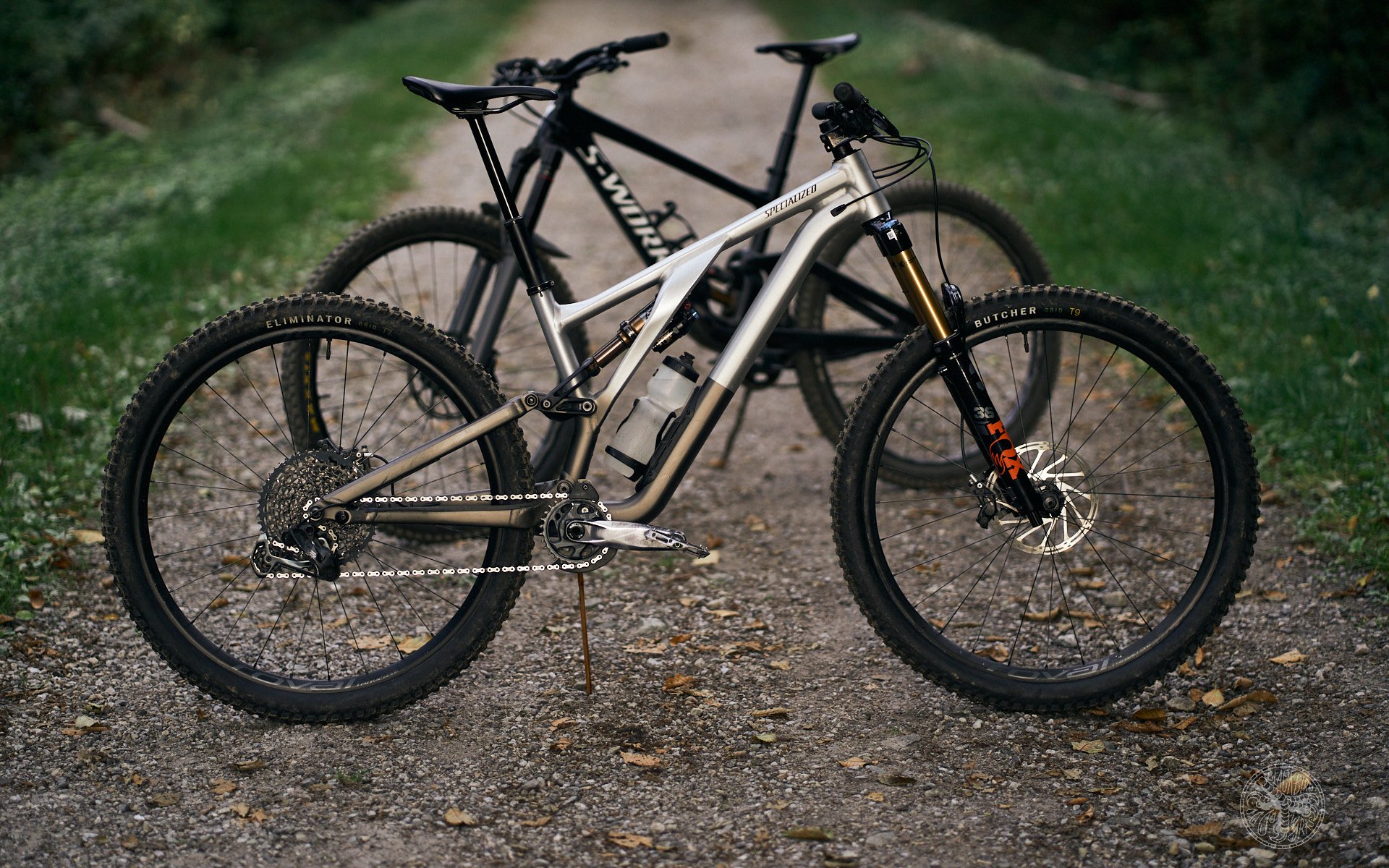
LONG TERM REVIEW
2022 Specialized Stumpjumper EVO Elite Alloy
A tale of two Specialized bikes.
Well, OK - this is really just the tale of one bike, and that bike is (take a deep breath in) the Specialized Stumpjumper EVO Elite Alloy. In the interest of not going batshit crazy, I will truncate this run-on-sentence-of-a-bike-name to “Stumpy”, or “EVO”, or maybe even “Stumpy EVO” throughout this review. These shortened nicknames shall not be confused with any of the myriad other flavours of Stumpjumper in the Specialized catalogue.
The second bike in our tale of really just one bike is my daily driver - the Specialized Enduro - a bike whose intentions and capabilities fit me so well, I haven’t yet found a bike to equal it. Naturally, I figured what better way to review the Stumpy EVO, than to draw some comparisons to its slightly bigger and badder brother?
Before the EVO came up for review, I was asked point blank by the NSMB boss types: “Are you only interested in reviewing monster bikes?” My initial reaction was a chuckle, followed by a slight pang of existential worry. Am I that obvious? Am I only interested in riding big travel sag-wagons? Wannabe DH bikes with dropper posts and 500% range? After quickly realizing that I was definitely OK with my penchant for big bikes, I started to wonder if it was a loaded question - was I about to get roped into reviewing a bike that said “SID” or “32”? While this prospect worried me, I decided to keep my options open, and I warily answered: “No”.
I’m glad I kept my options open, otherwise I might not have had the chance to spend a few months on the Stumpy EVO, a bike that is decidedly not a monster bike. It just likes to act like one. Sometimes.
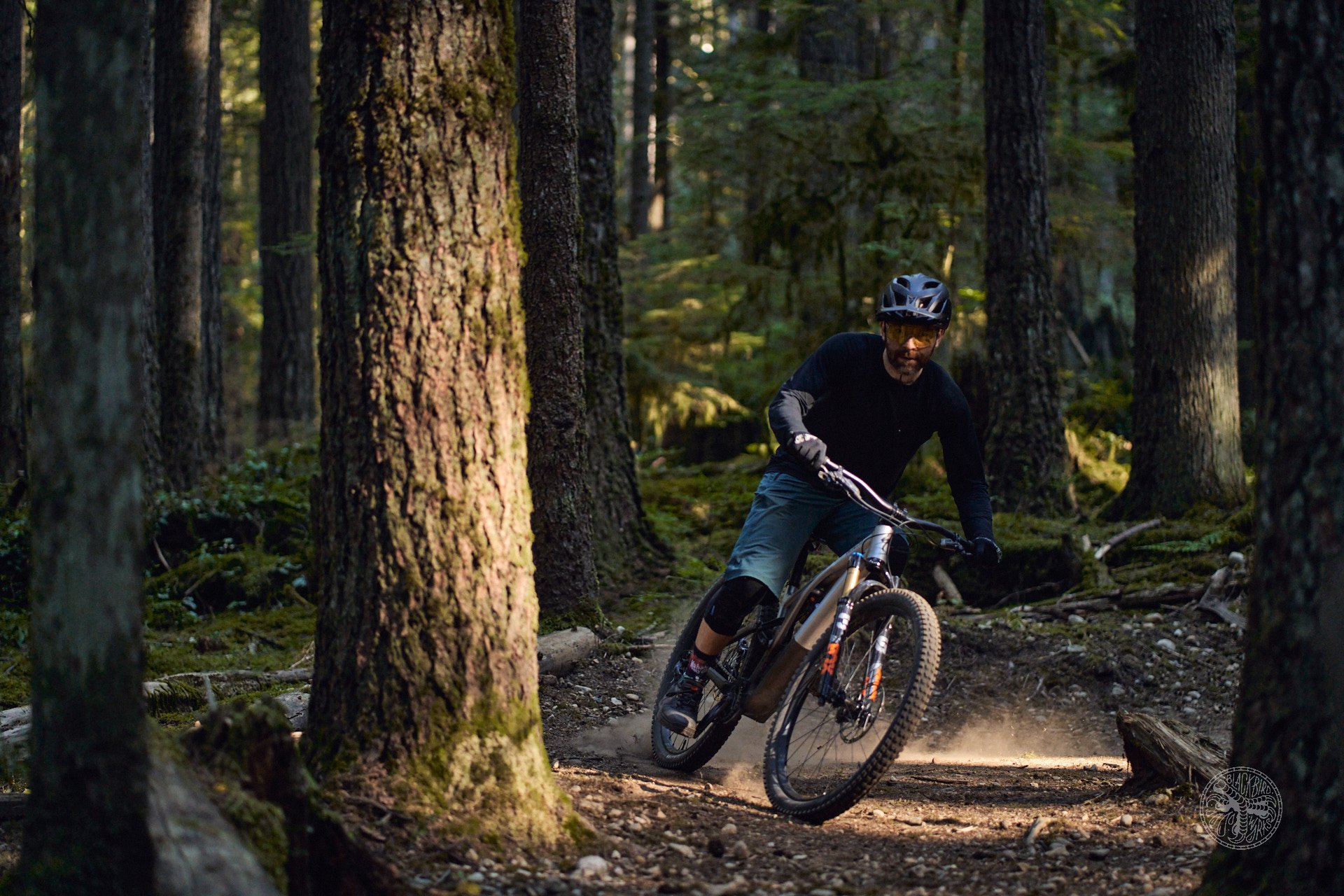
First introduced in 1981, the Stumpjumper was the world’s first mass-produced mountain bike, and while it has seen plenty of change and innovation over the years, Specialized has always had a Stumpy in their catalogue, making it the longest running mountain bike model in history. The first half of the Stumpjumper story was that of the hardtail, and it wasn’t until 2000 that Specialized started offering full suspension models, sporting early versions of their ubiquitous FSR suspension - the Horst Link design that Specialized held under lock-and-key until the U.S. patent ran out in 2013.
Today, the Stumpjumper family rolls almost exclusively on 29" wheels, and is further broken down into two variants - the regular, and the EVO. Specialized uses the EVO moniker to denote a bike that is a little bit rowdier than its non-EVO kin. Increased suspension travel, sturdier components, and descending-focused geometry are the characteristics you can expect from an EVO labeled bicycle from Specialized. In addition to the Stumpy EVO Elite Alloy reviewed here, Specialized offers several other carbon and aluminum models - from the truly eye-watering S-Works edition that can be had for a cool 16,199 CAD, all the way down to the Comp Alloy version which is less than one-third the price of the S-Works at $5,299 CAD. If the OEM builds don’t do it for you, carbon and alloy framesets are available as well.
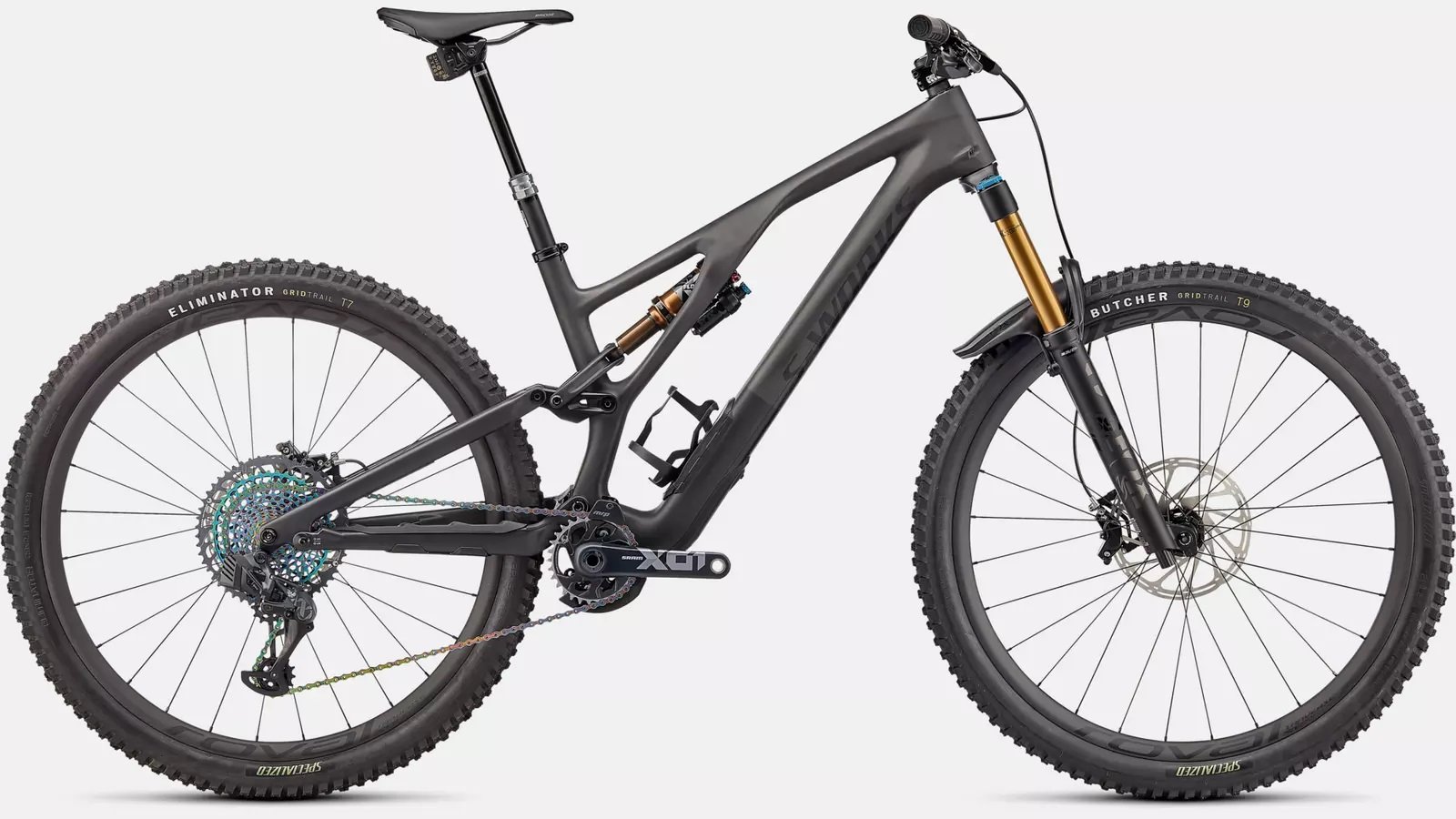
S-Works Stumpjumper EVO
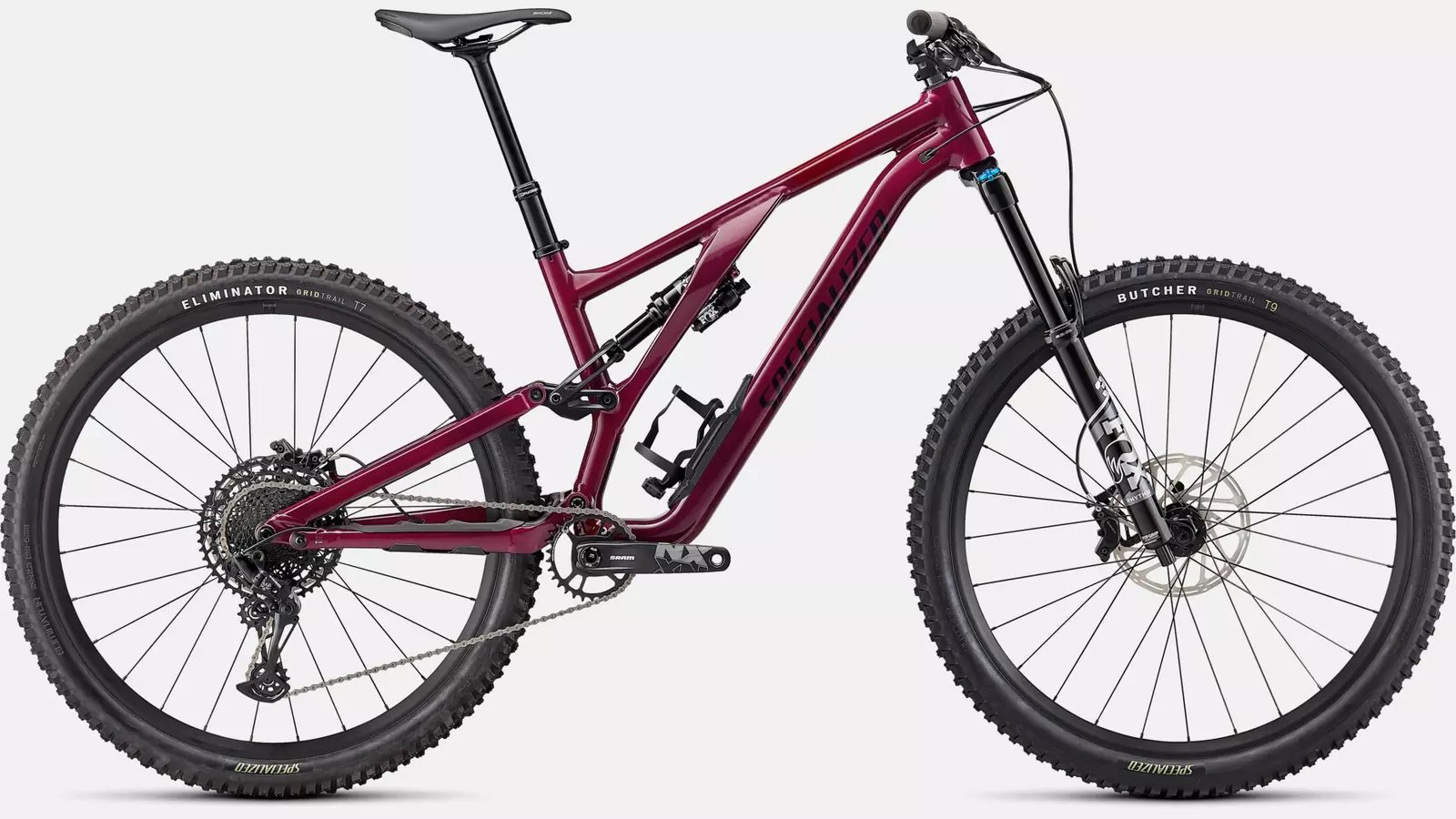
Stumpjumper EVO Comp Alloy
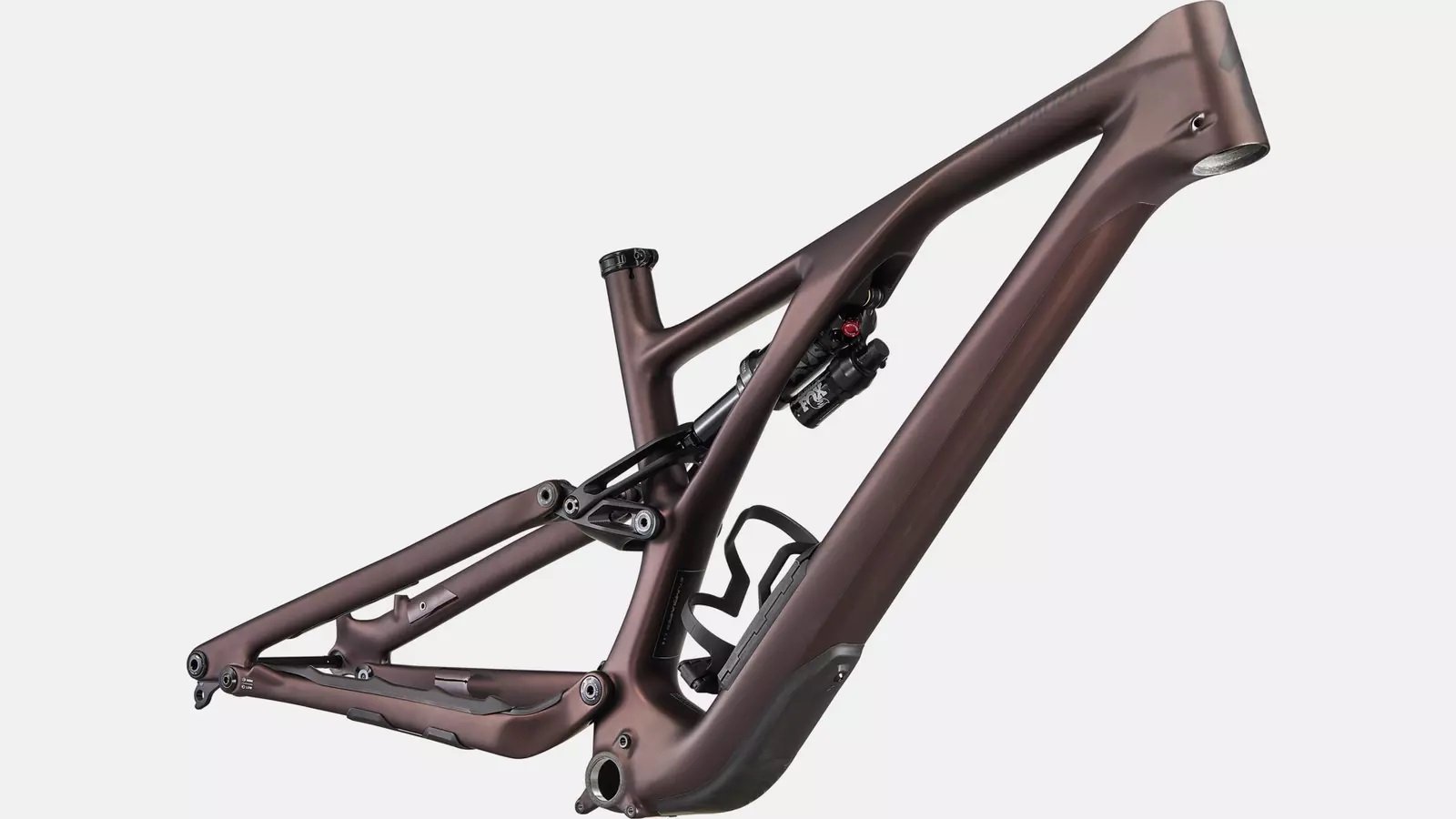
Stumpjumper EVO Frameset
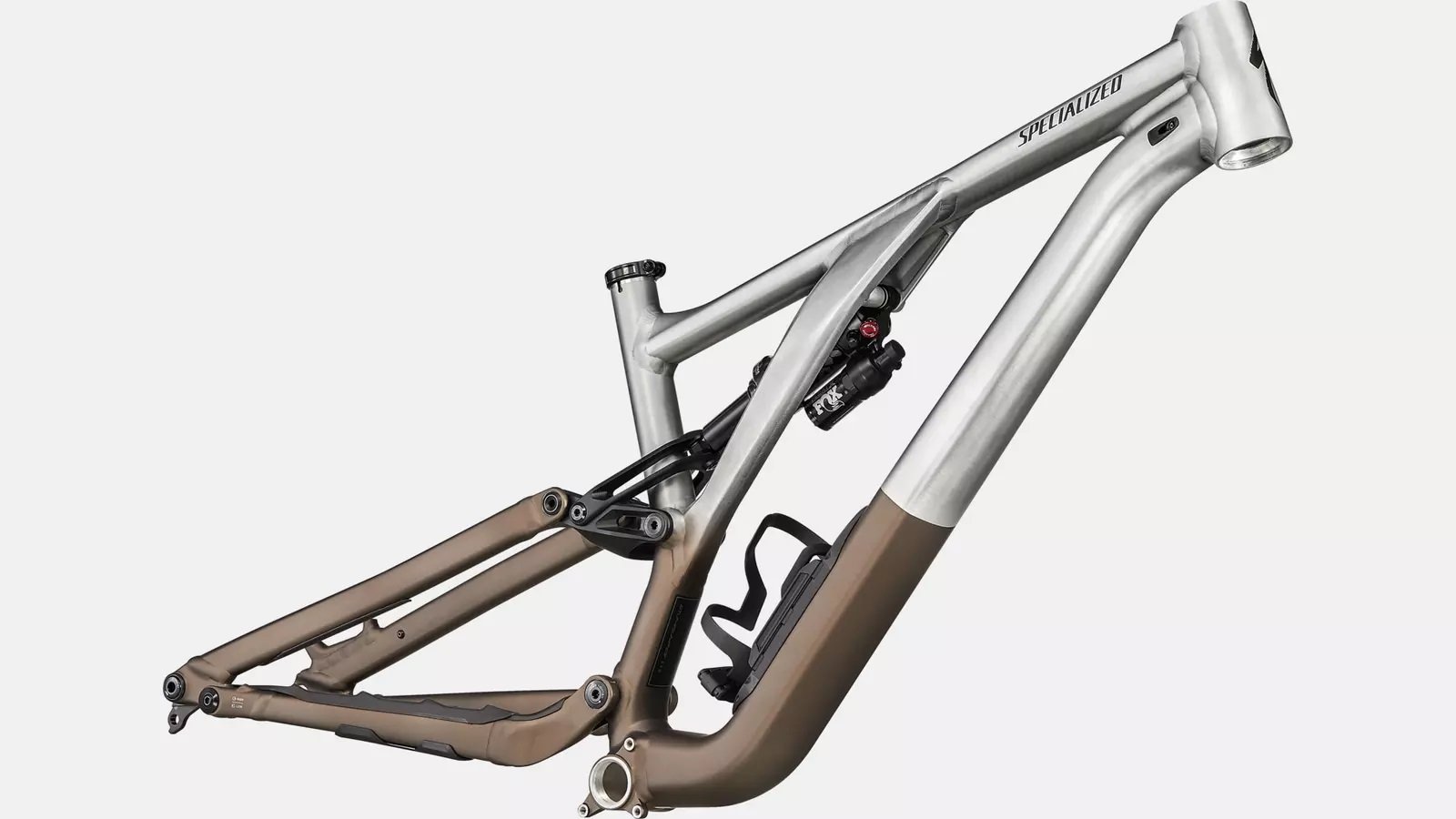
Stumpjumper EVO Alloy Frameset
This particular flavour of Stumpy, the EVO Elite Alloy, has a solid spec, and I gotta hand it to Specialized for making this machine happen at a truly competitive price. With nary a wisp of carbon fiber to be seen, the $7499 CAD price tag might seem steep to the untrained eye, but look closely at the components, and you’ll see that Spesh has put those dollar bills to good use. In the age of bike companies increasingly spec’ing their aluminum bikes with junk components, it’s refreshing to see an alloy frame that isn’t merely an ugly afterthought to the carbon fiber circle jerk. Don’t get me wrong - I love me some carbon fiber, but there’s something incredibly liberating about not giving a single goddam about scratches, scrapes, gouges, rock strikes, crashes, tailgate pads or spilled fluids (bodily, or otherwise) that your bike may encounter in the pursuit of a good time on two wheels. Long live metal.
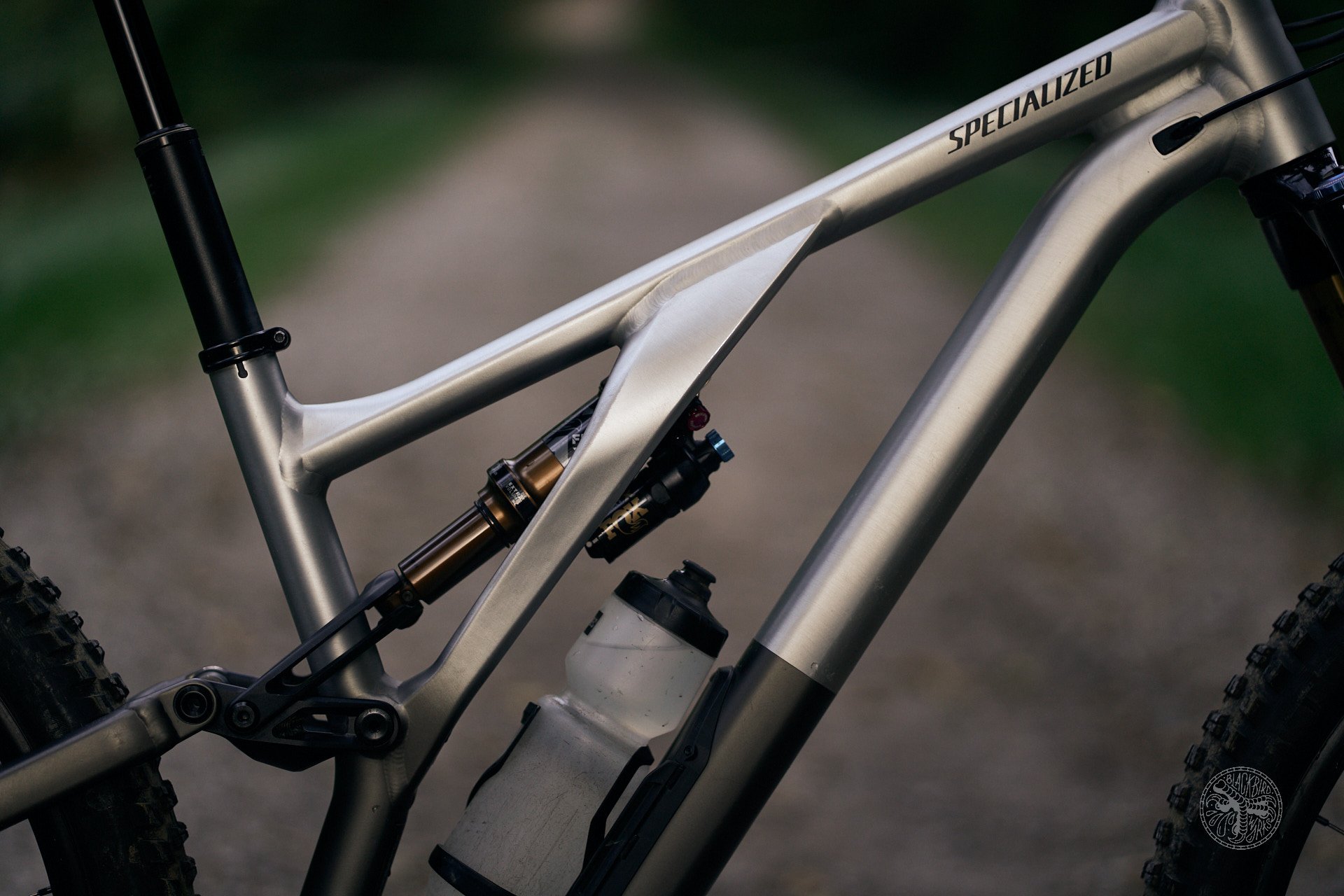
Who needs carbon fiber, when aluminum can look this good?
Notable bits in the parts spec include: Fox Factory suspension at both ends, with the front sporting a 160mm travel 36, while the rear end bounces out 150mm on a Float X, SRAM Code RS brakes with 200mm rotors, and a strictly GX working-class Eagle drivetrain . Wheels are Specialized’s own Roval Traverse alloy hoops, featuring 30mm bead width, and a DT Swiss 370 freehub body.
The Specialized house-brand streak continues on to the tires, and we are now in an era where we can legitimately say that’s a good thing. Specialized have recently reformulated their tire casings and rubber compounds, and the industry response has been overwhelmingly positive. The Stumpy EVO sports Grid Trail tire casings front and back, with a soft compound T9 Butcher up front, while the harder compound T7 Eliminator handles rudder duty. The Grid Trail casing features 60TPI single-ply construction, with a butyl wrapped, foldable bead, putting it somewhere in the realm of an EXO+ for all those readers who compare tires in Maxxis branded units.
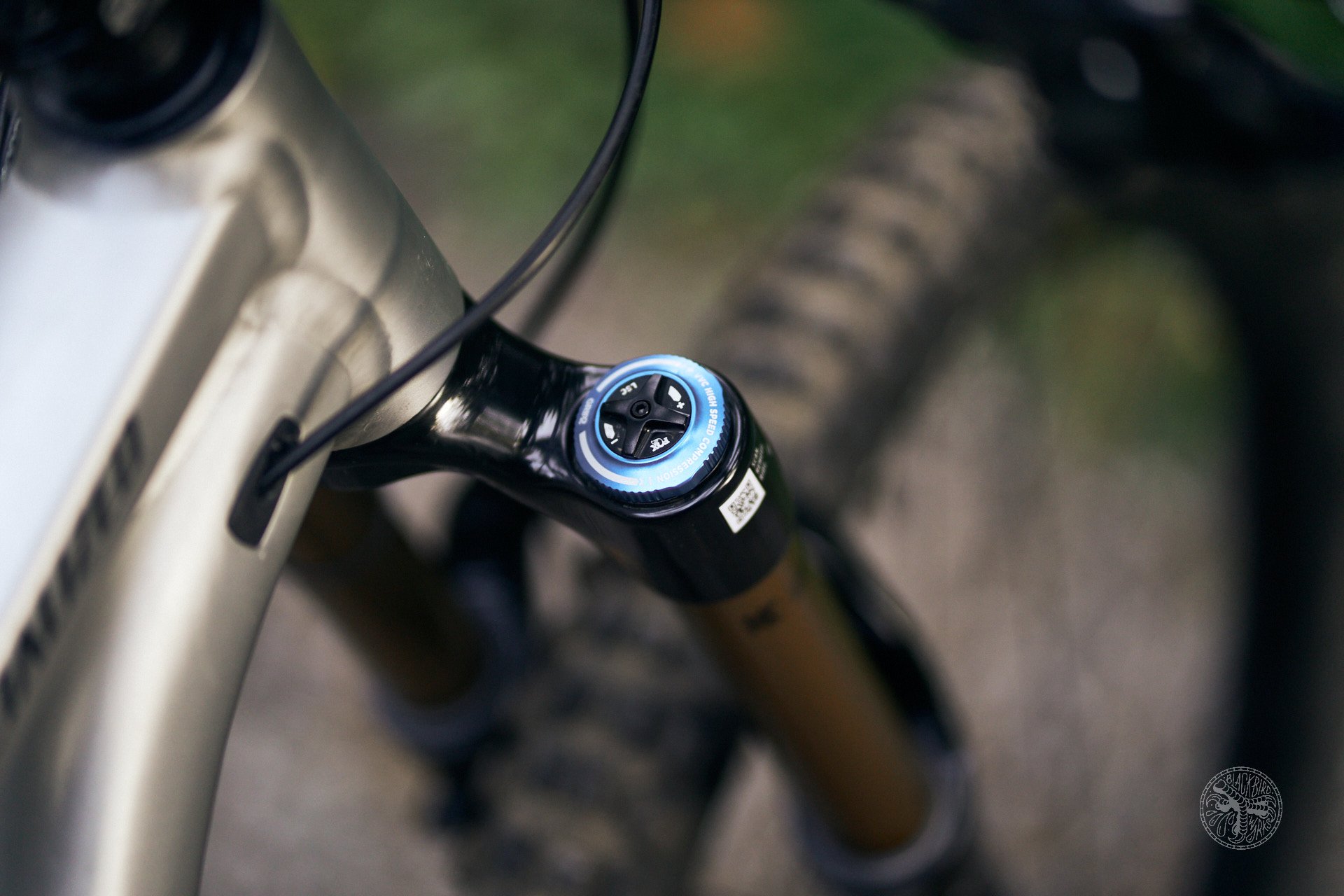
The 38 may have unseated this former king of single crowns, but the Fox 36 is no wimp.
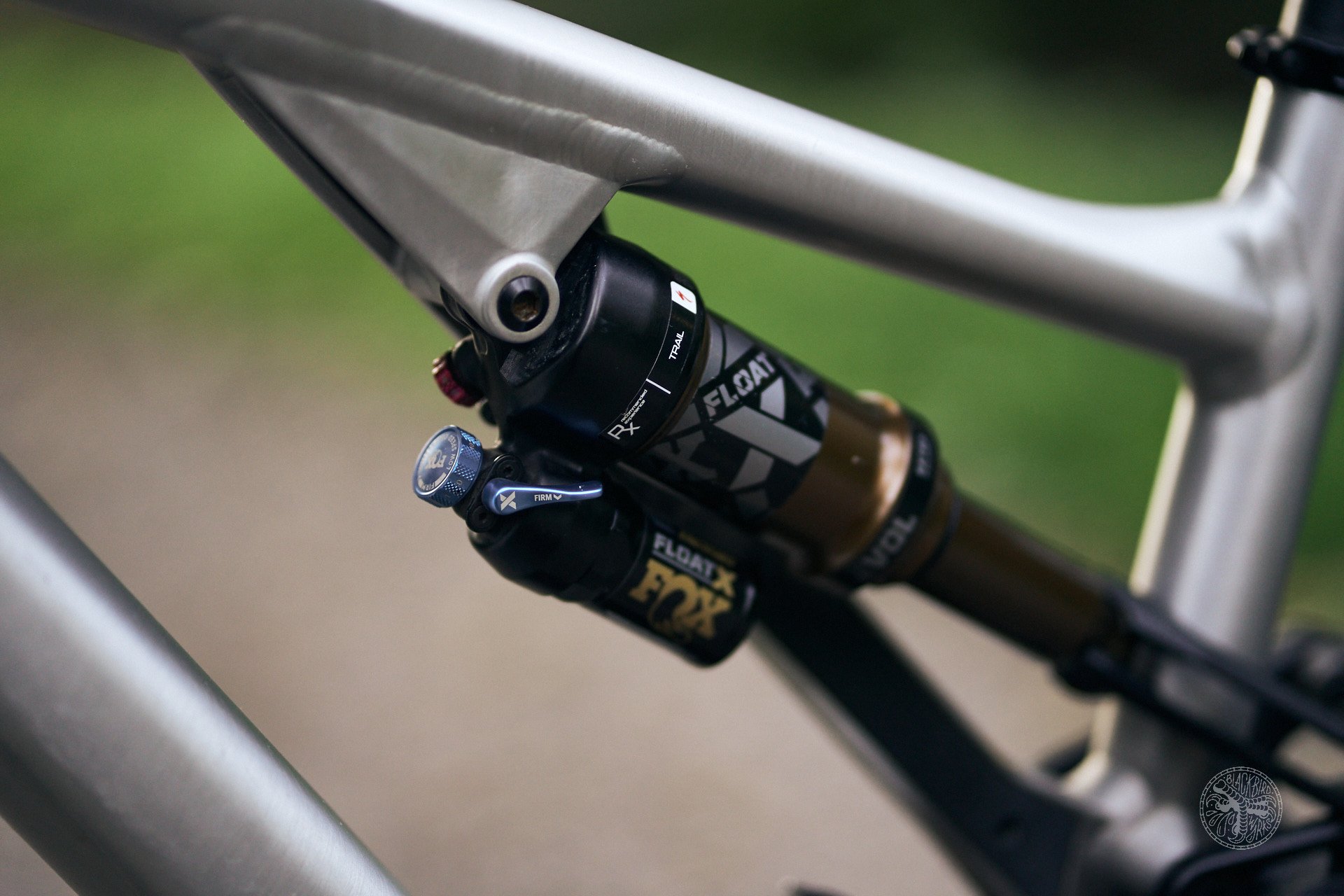
New to the Fox lineup, the Float X was surprisingly capable and reliable throughout the review period.
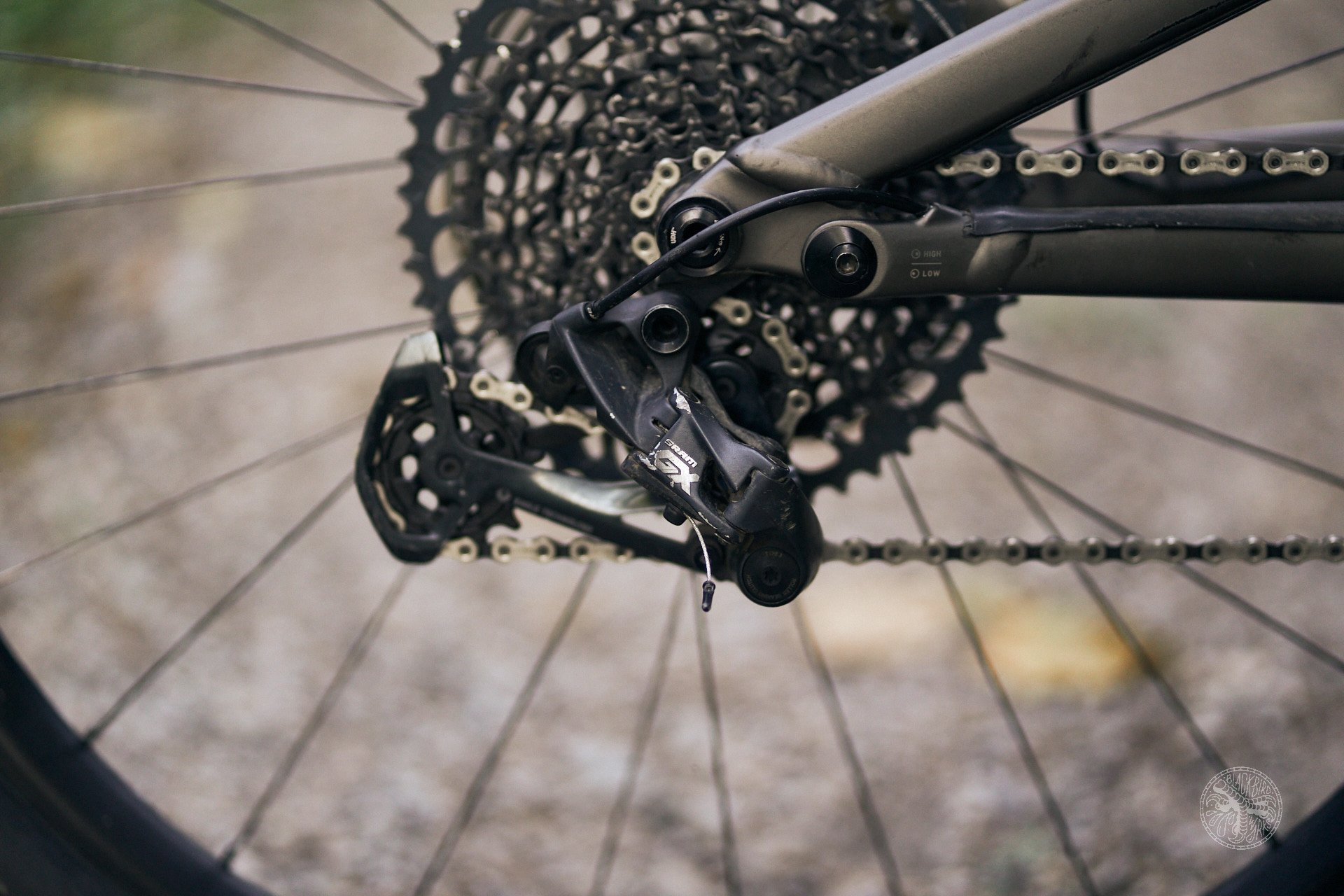
Nothing fancy here, just a dependable drivetrain that won't break the bank. BB set to "high", because: Stumpy EVO.
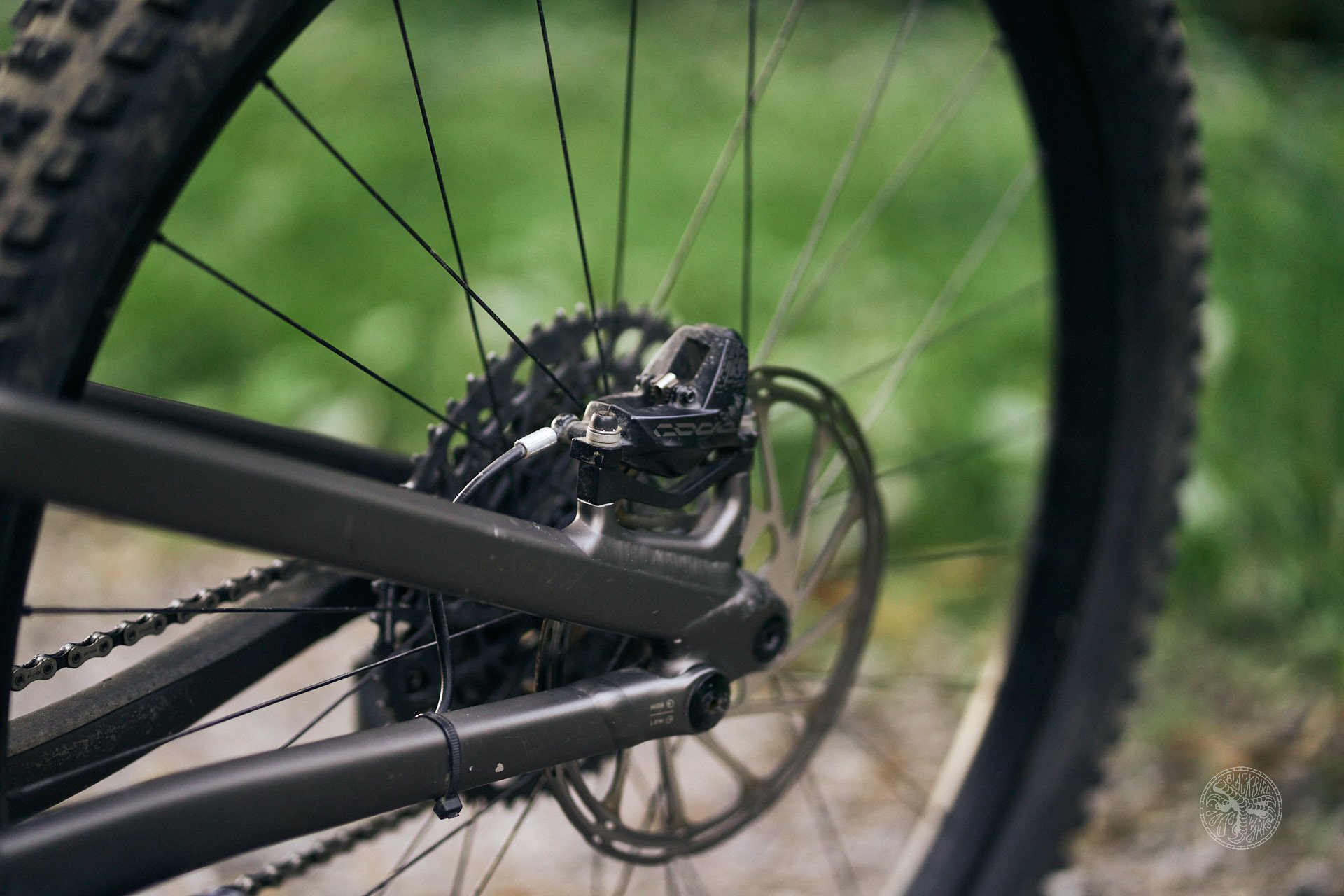
Big brakes for a bike with a big personality.
The M5 alloy frame is truly a thing of beauty, with massive, reassuring welds at all junctions, an asymmetrical sidearm design, threaded BB, and yes - you also get that one feature the fanny pack lobby has been trying to shut down for years - the SWAT box. My “previously enjoyed” review bike arrived without a SWAT pouch of any kind, although I’m fairly certain all new SWAT-equipped bikes ship with a pouch to keep your small stashables from migrating down into the BB shell.
The chainstay pivot features a reversible chip that adjusts the BB height by 10mm, while the headtube houses a clever swappable cup that allows for +/- 1.0° head angle adjustment, a feature so obvious and so simple, it would be a tragedy if it wasn’t included on the next Enduro.* I could see the adjustable head angle proving particularly useful for riders wanting to experiment with different fork travels on this bike. As if all that adjustable geometry wasn't enough, Specialized was even gracious enough to include their blessings should you wish to party in the back - the Stumpy EVO is mullet compatible.
*Dear Specialized: Just make this happen, ok?
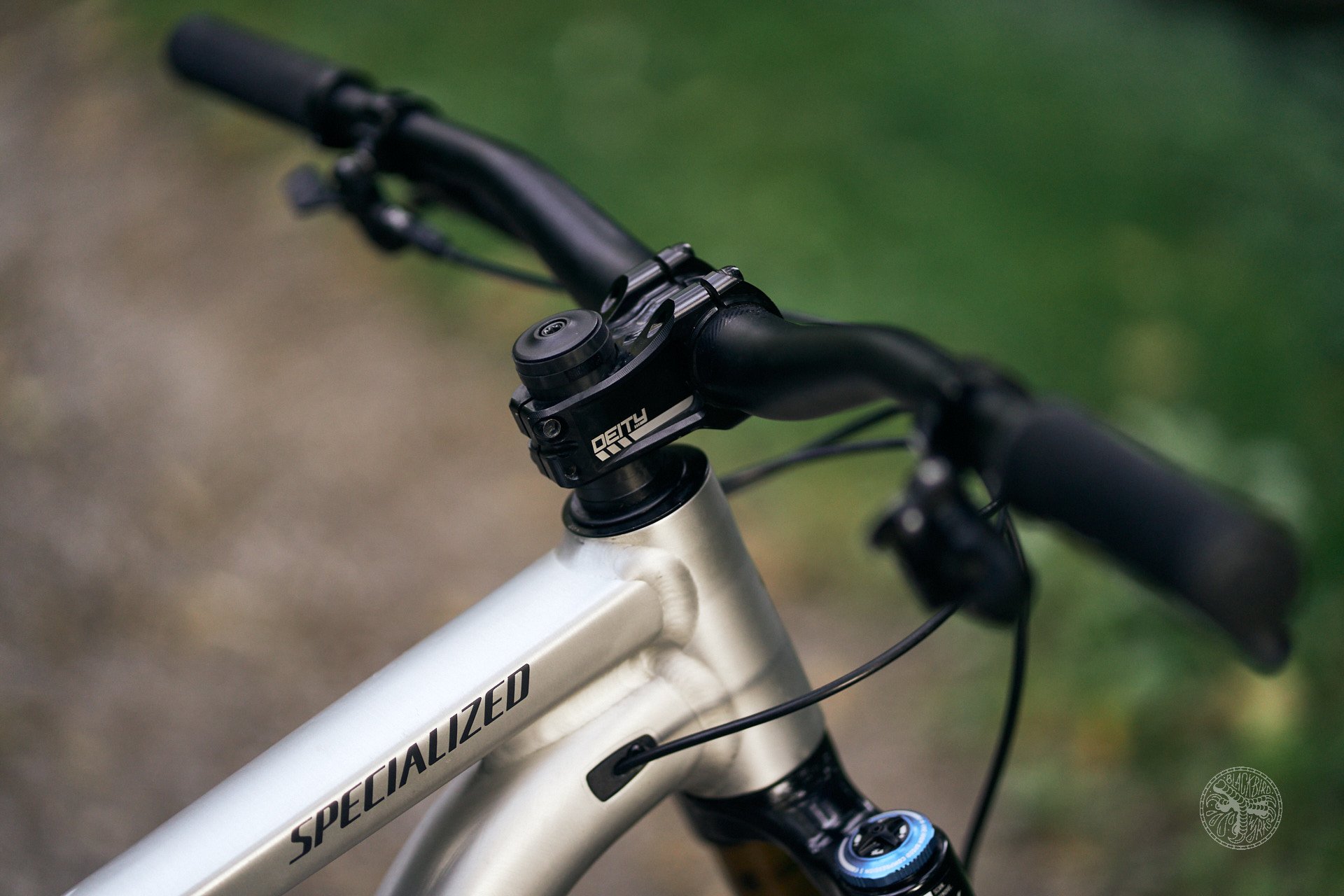
The oversized headtube contains an easily swappable cup that allows +/- 1.0° head angle adjustment. I kept the EVO in full slack mode for most of the review period.
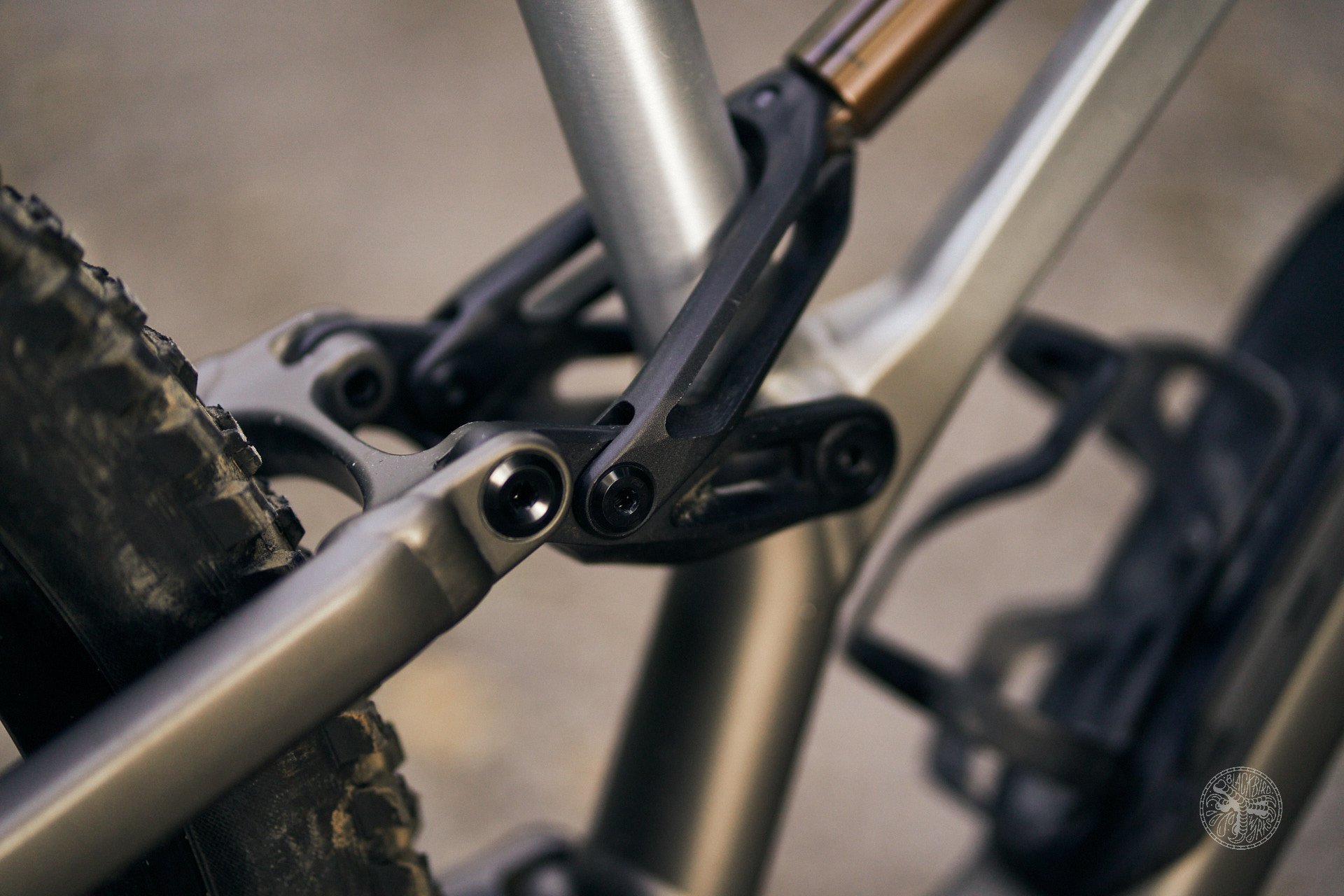
The Stumpy employs a simple lever and strut to drive the shock.
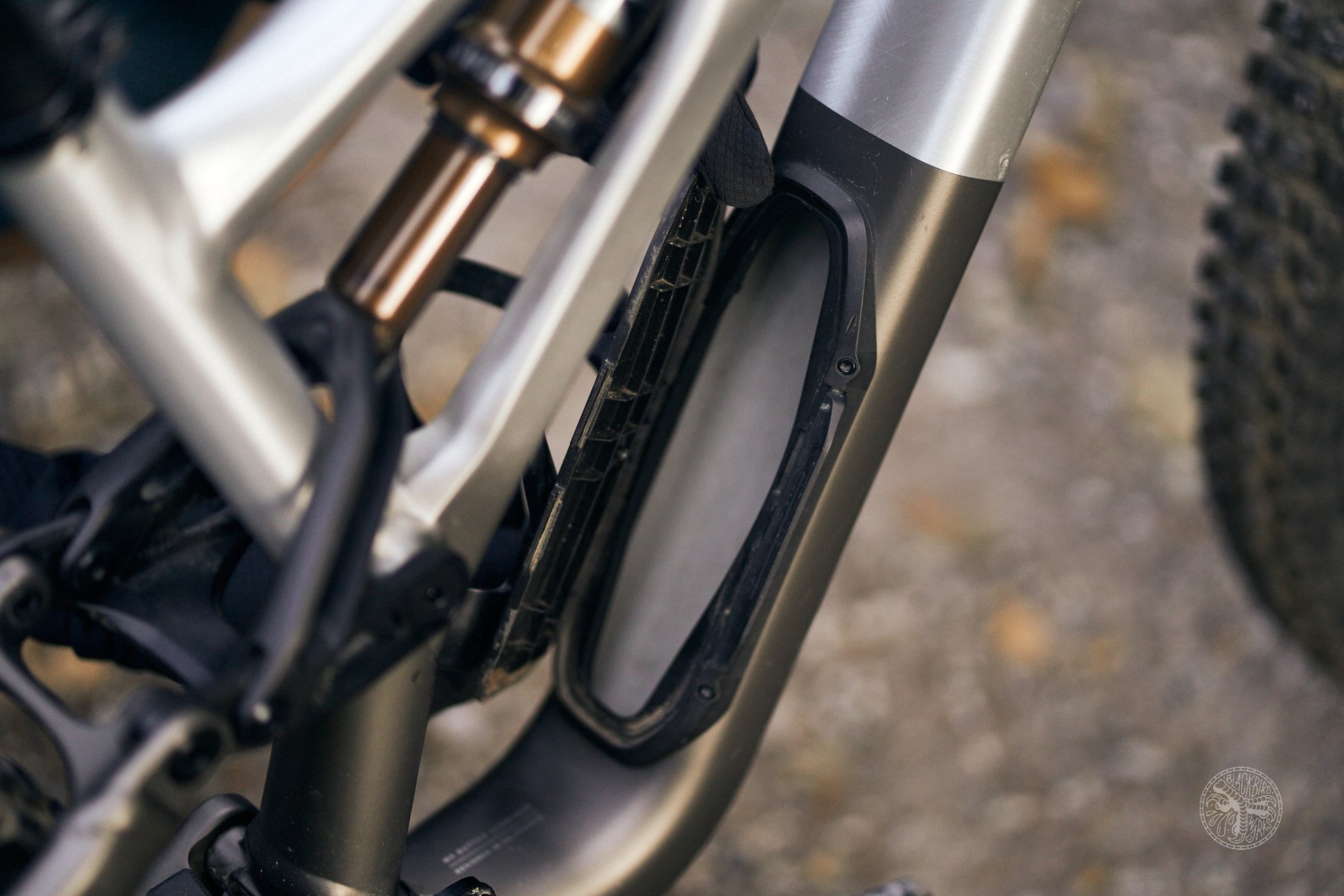
Free the fanny pack! Ride SWAT.
EVO: Longer, lower, slacker - pick all three.
On paper, my S4 Enduro has very similar geometry numbers to the S4 EVO, with the biggest differences found in the reach and wheelbase measurements. With a reach of 487mm and a 170mm travel fork, the Enduro bangs out a wheelbase of 1274mm. Compare that to the EVO’s reach of 475mm and 160mm travel fork, which adds up to a significantly shorter wheelbase of 1249mm. But close your eyes and sit on both bikes in the parking lot, and you’d be hard pressed to tell them apart. My Enduro sports a 35mm stem length, whereas the EVO has a 50, putting the effective total reach within millimetres for the two Speshies. At only 15mm difference in stem length, steering manners between the two bikes aren’t terribly different, with the Enduro inspiring more confidence at the bars when piloting at scary speeds. The EVO certainly has that “go-fast” button, it just hits redline a few notches earlier than the Enduro.
Considering the geometry and suspension travel, it’s not hard to understand why the EVO is easier to navigate on climbs and slower, low-angle trails. The EVO is easy to snap around and change direction, whereas the Enduro can feel awkward and wallowy on mellow trails. One of the EVO’s best traits seems to be its ability to make every trail super fun and exciting, whereas the Enduro needs a steady diet of gnar to be happy.
Final Suspension Settings - Rider weight = 190lbs (all clicks out from fully closed).
Fox 36 Factory
100psi with 3 volume spacers
HSC - 3
LSC - 6
HSR - 5
LSR - 3
Fox Float X Factory
240psi with .8" volume spacer
LSC - 7
LSR - 7
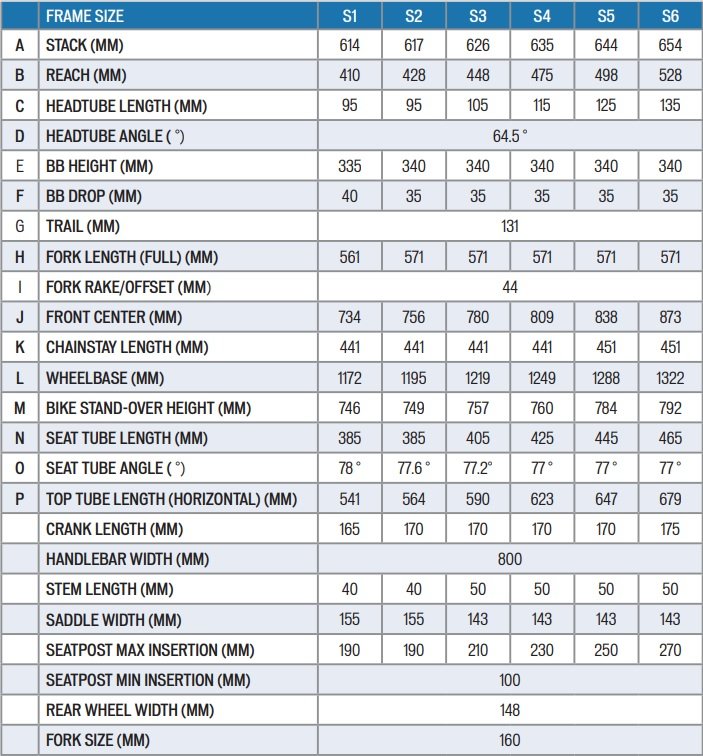
2022 Stumpjumper EVO geometry chart. At 5'11", I was very comfortable on the S4, even if the trendsetters want me on an S5.
Being a Horst Link bike, I expected the EVO to be a lackluster climber, but I was pleasantly surprised to have missed that mark completely. The EVO climbs incredibly well for a 34.5lb trail bike with geometry numbers approaching those of a DH race machine. My Enduro comes in at about the same weight as the EVO, and is even a touch steeper in the front end (with EVO set to slack mode - where I spent most of the review), and is nowhere near as good a climber as the EVO. While I don’t have specific numbers, it’s clear that the EVO is designed around a much higher anti-squat value than the Enduro, leading to a firmer platform while pedaling. The 30t stock chainring found on the EVO further contributes to the anti-squat value, while also making you feel invincible when you realize you’ve been climbing in 4th gear for over an hour. The EVO’s Float X shock is equipped with a climb switch, but I honestly never felt the need to use it, even when grinding up miles of asphalt.
When I received the EVO, the chainstay flip chip was set to the “high” setting, and after a few exploratory rides, I decided to try the “low” setting to see if I was missing out on anything. I mean, is a mountain bike even rideable if you don’t have it in the lowest setting possible? What would my buddies think if they found out I was riding a bike in the high setting? My goodness, the embarrassment! Low is stable. Low is cool. Low is good. Well, you know how they say you can have too much of a good thing? Well with the EVO, you can definitely have too much of a good thing, and that good thing is a ground-scrapingly low BB height. I know there are locales where the fully slammed EVO will handle like a dream, but North Vancouver is not one of them. With rock strikes a-plenty in the low setting, I found I had to focus too much on choosing lines that wouldn’t smash my pedals clean off the crank arms (an incident that happened only once during the review period, but had nothing to do with the low bottom bracket, and everything to do with rider hubris). Clipless pedals may have an easier time clearing trail obstacles in the low setting, but wide platform pedals don't stand a chance. With a BB drop of 35mm, the "high" setting is still plenty low, and far more Shore-friendly. But no one will care, because the “high” setting is always wack, and low is always moar betterer.
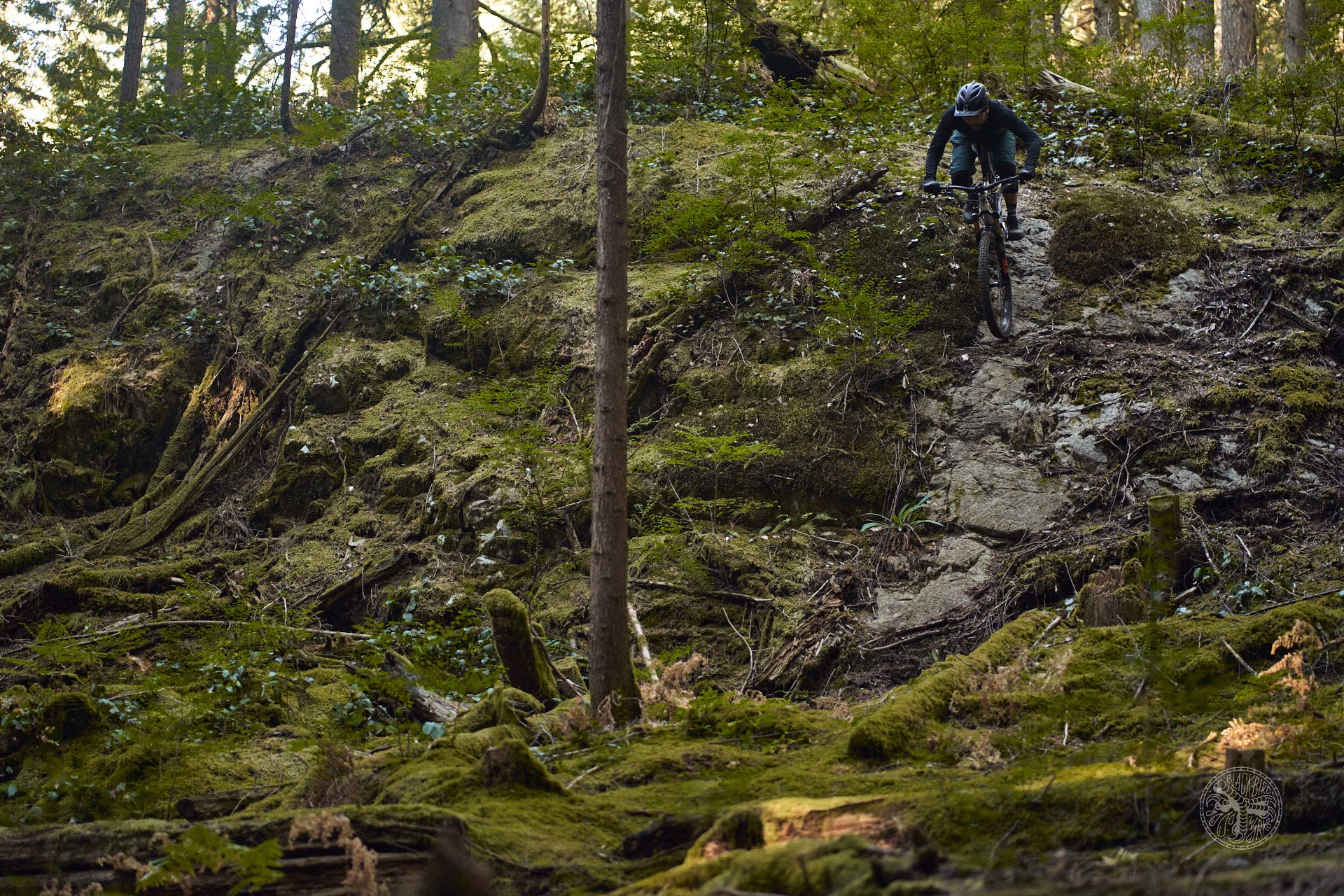
Testing out that EVO geometry.
When the suffering is over, the EVO is a giggle factory on most trails you could point it down or across. They call this bike the Stumpjumper, but you could substitute “stump” with any noun found in the forest, and the name would still be applicable - this thing just loves to be airborne all the time. Side hits are usually features I seek out in the snow on a waxed base, but the EVO is a bike that makes its own side hits out of seemingly innocuous trail features that you might not give a second thought on another bike. At 441mm, the chainstay length on the EVO is fairly average for this segment, but they feel short and snappy when playing around on trail features. It’s 2022, and I’ve caught myself unironically describing a 35lb 29er as “jibby”. What a time to be alive!
I think I have to credit the sporty rear suspension for the EVO's playful manners, and credit Fox as well for what just might be one of the best performing air shocks I’ve come across. The Float X is “the little shock that could” - simple, reliable, and perfectly matched to the EVO's playful character. All too often, I’ve found that shocks with fewer adjustments have a hard time running fast rebound speeds without topping out, but the Float X impressed me with its ability to rebound quickly, without a hint of top-out. Quiet, consistent, and dead easy to set up - the Float X is a wonderful little shock. Loading the EVO's suspension for a jump is second nature - it just feels right, and you’re rewarded with a satisfying pop off any sized lip. Compare that to the Enduro, which is no slouch when jumping - you just have to supply a little more elbow grease.
Digging a bit deeper into the suspension, the Enduro's 170mm of travel is fairly progressive at 25%, while the EVO's 150mm is only 19% progressive. On the trail, this translates to the feeling that the Enduro is more eager to "sit" into its travel, and its initial stroke is much more supple. The EVO's suspension, on the other hand, feels more linear, and you really need to increase the air pressure (or add volume spacers) to keep the Float X from bottoming out on big hits. At those high shock pressures, what the EVO lacks in suppleness, it makes up for in mid-stroke support, and huge pop. This is not to say that EVO is an uncomfortable ride by any means, but you really need to lean into it to make it work, and it's a bike that rewards a very engaged riding style.
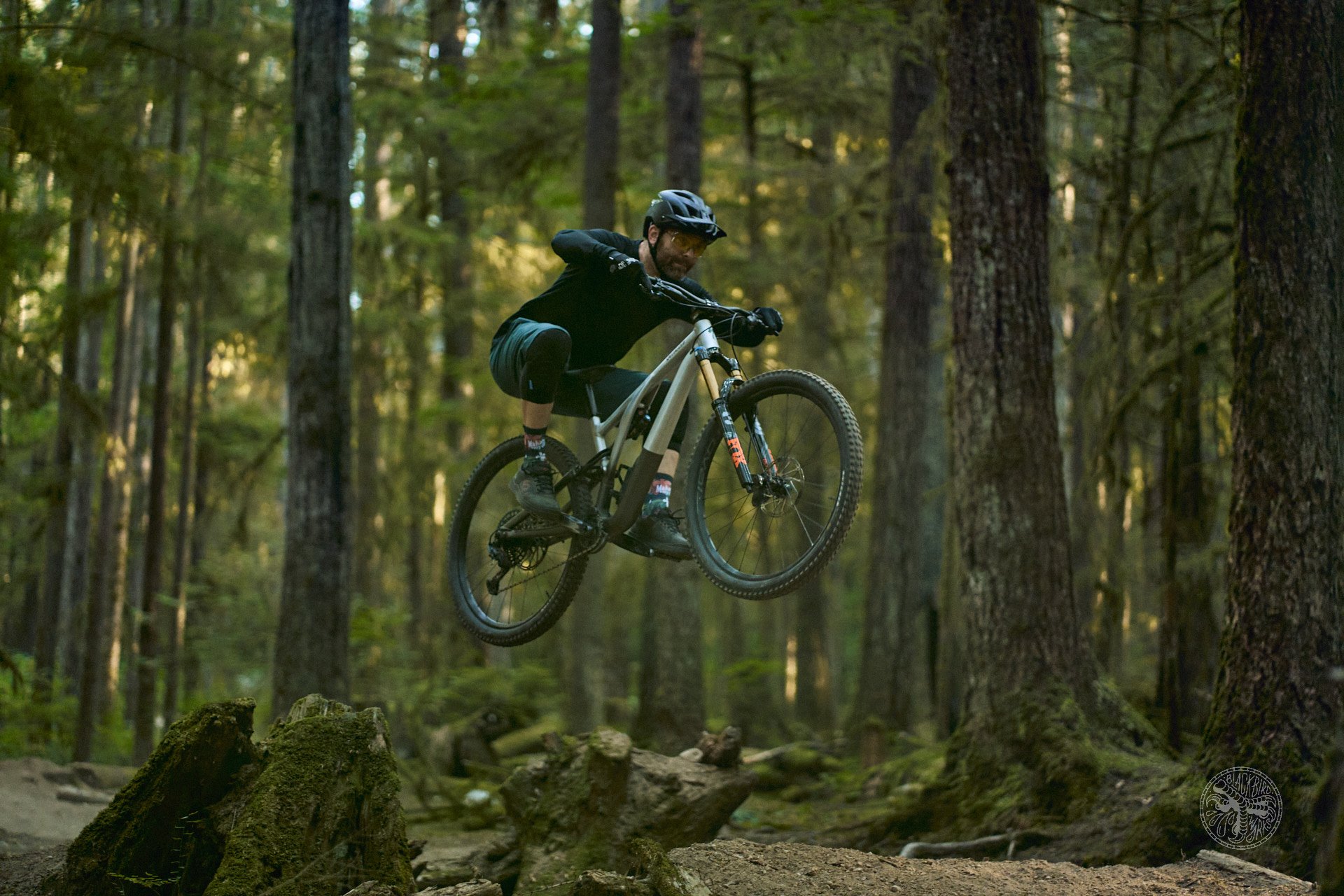
In case you were wondering, it can jump over stumps.
It’s 2022, and I’ve caught myself unironically describing a 35lb 29er as “jibby”. What a time to be alive!
If there’s a zone where the Enduro quite literally leaves the EVO in the dust, it’s in the bike park. This should surprise exactly no one, and while the EVO can certainly handle Whistler days, it’s bike park speeds and terrain that can quickly overwhelm this “little” bike. The sub-64° head angle might fool you for a minute or two, but you’re soon reminded that the 36 is not a DH fork, and even though you’re still having loads of fun, it’s much harder to get away with murder when you’re bringing a knife to a gun fight. On The Shore, where speeds are slower, and terrain and bumps are often loose and crumbly, the EVO manages to squirm through just about anything you can throw at it. But in the bike park, where the speeds are much higher, and bumps might as well be cemented into the earth, riding the EVO becomes a bit of a game of pinball - mostly fun, sometimes frustrating.
While it performed admirably throughout the test, the GX drivetrain was particularly clanky in the bike park, and I suspect the derailleur clutch just wasn’t up to the task of all that violent shaking. Even as shifting performance remained reasonably intact, I could almost feel the life getting sucked out of that poor derailleur over the course of several top-to-bottom runs. In the drivetrain's defence, it never once dropped a chain in the bike park - even after a spectacular 50ft cartwheel through the brambles. Speaking of rider errors and how best to survive them, Specialized spec’d proper brakes and rotors on the EVO, and in spite of sometimes riding outside the EVO’s design parameters, I never once felt under-braked.
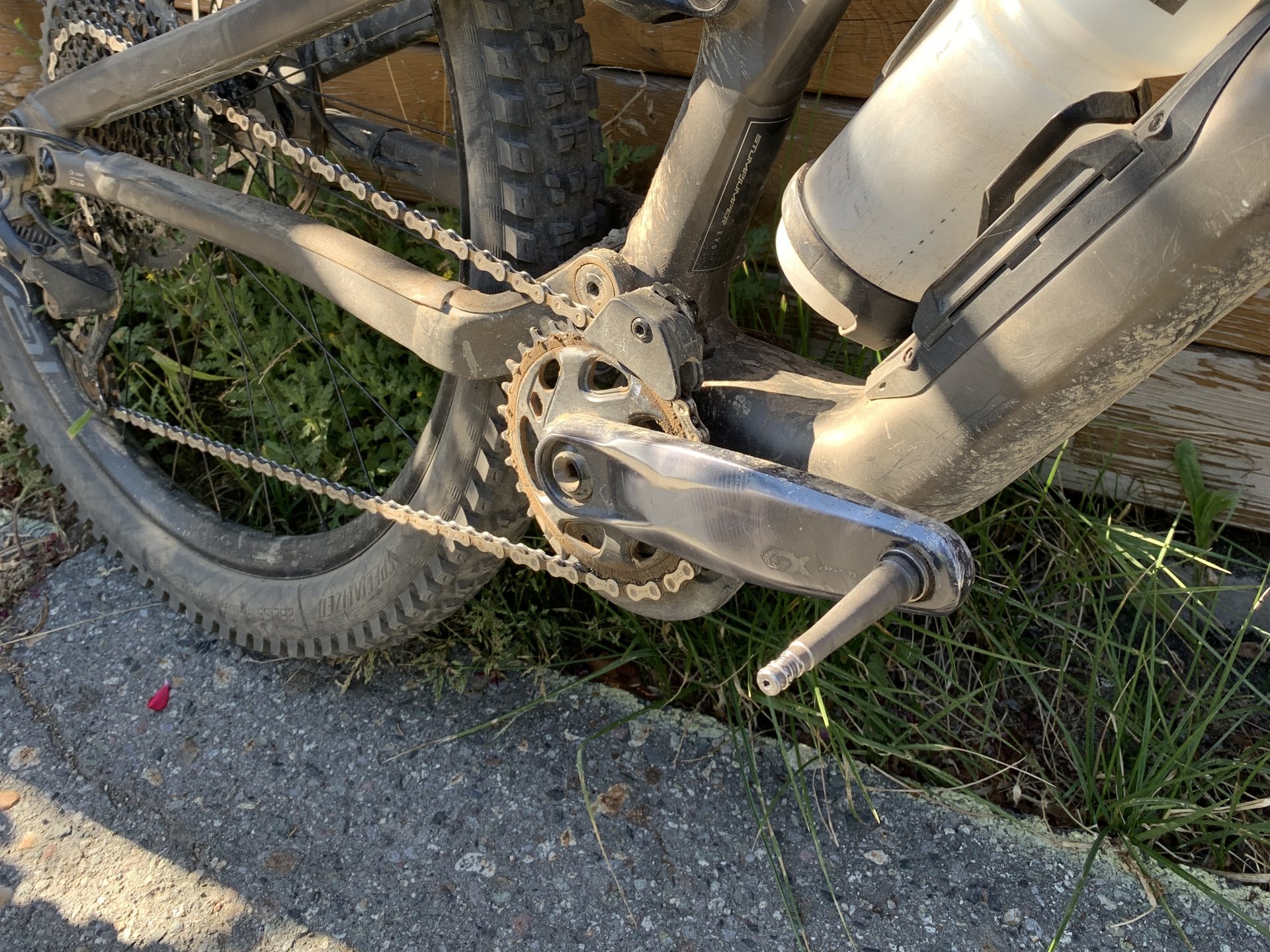
Whistler has a tendency to delete bike parts at an alarming rate.
The best brakes in the world are meaningless without tires to match, and there is much industry hype surrounding Specialized’s new rubber. My experience on past formulations of the Butcher and Eliminator left something to be desired, but whatever’s going on in the new T9 and T7 compounds, Spesh has certainly moved the needle in the right direction. While the review period didn’t include any terribly wet weather, it was obvious through back-to-back laps against the big M tires on my Enduro, the T9 compound was right up there with MaxxGrip in terms of stickiness on rocks and roots. I loved the shape and trail feel of the Butcher - chunky, widely spaced knobs felt predictable and familiar, while the alternating centre paddle knob maintained traction while straight-line braking in loose dirt.
The T7 Eliminator out back was a fine tire, but given the choice, I think I would have preferred another Butcher back there. The Eliminator was composed and predictable while cornering, but the centre knobs were too wimpy for my taste, looking dangerously close to a semi-slick in appearance. The Eliminator was a bit too eager to lose traction on steep chutes, and the resultant skidding further compounded the issue by quickly eliminating the Eliminator’s already too tiny treads. Where the Eliminator shines is on mellow grades and compact dirt and rock, where its lower rolling resistance becomes a blessing rather than a curse. While I would have preferred a double Butcher setup, I can just as easily imagine double Eliminators given the right terrain and rider - such is the versatility of the Stumpy EVO.
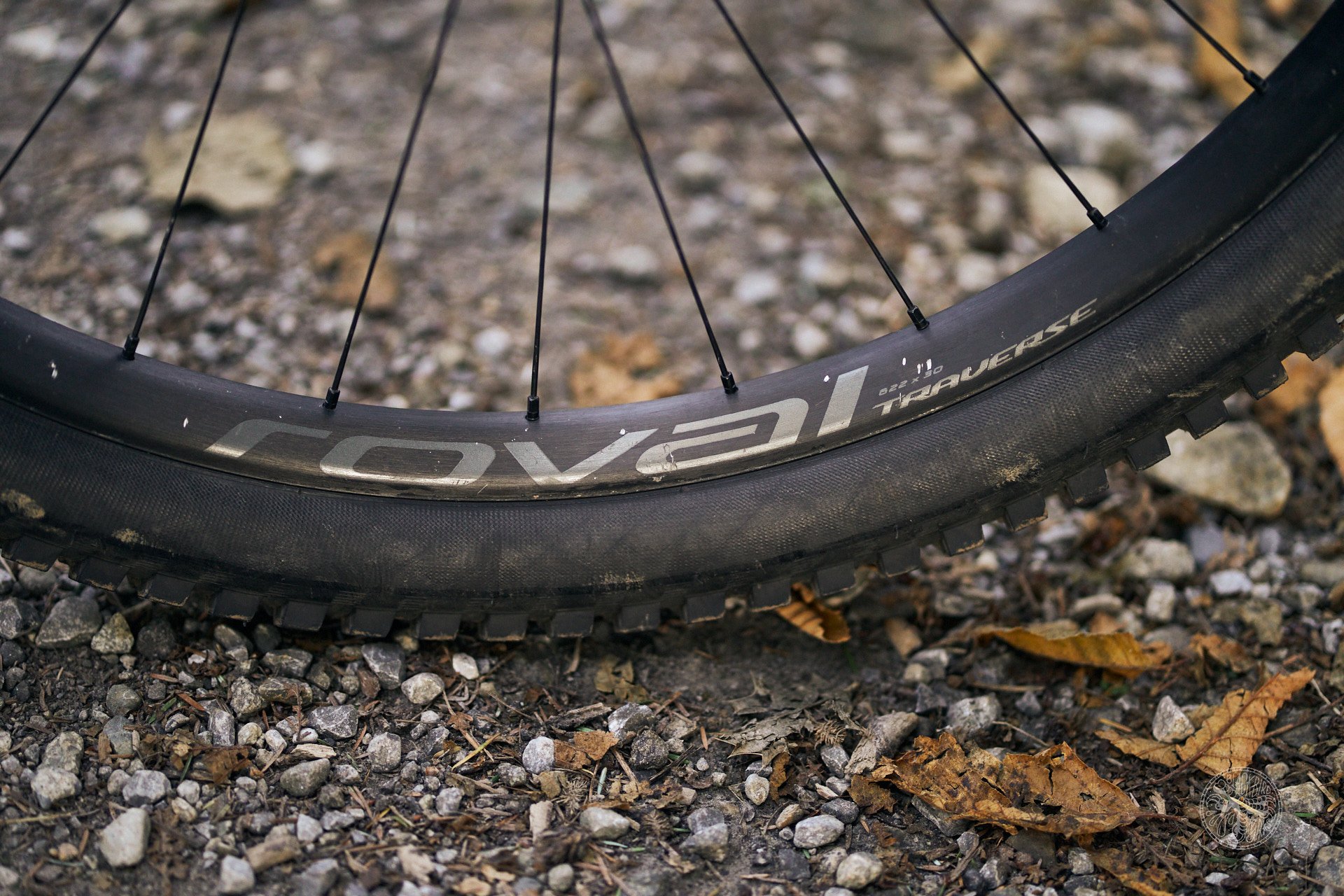
The Roval Traverse wheels shrugged off weeks of recklessness.
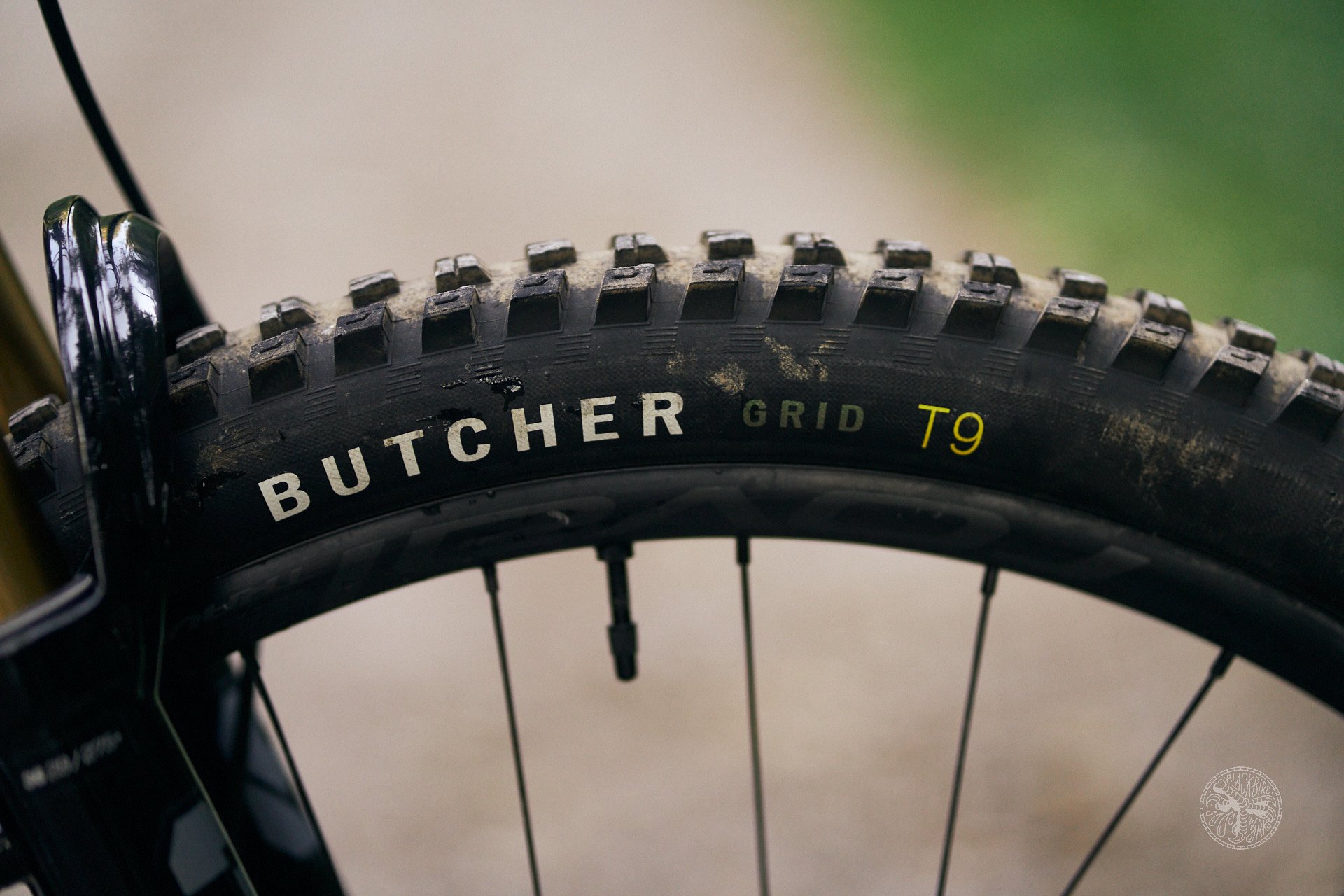
The new Butcher does everything well, and I wouldn't hesitate to pick up a pair for my own ride.
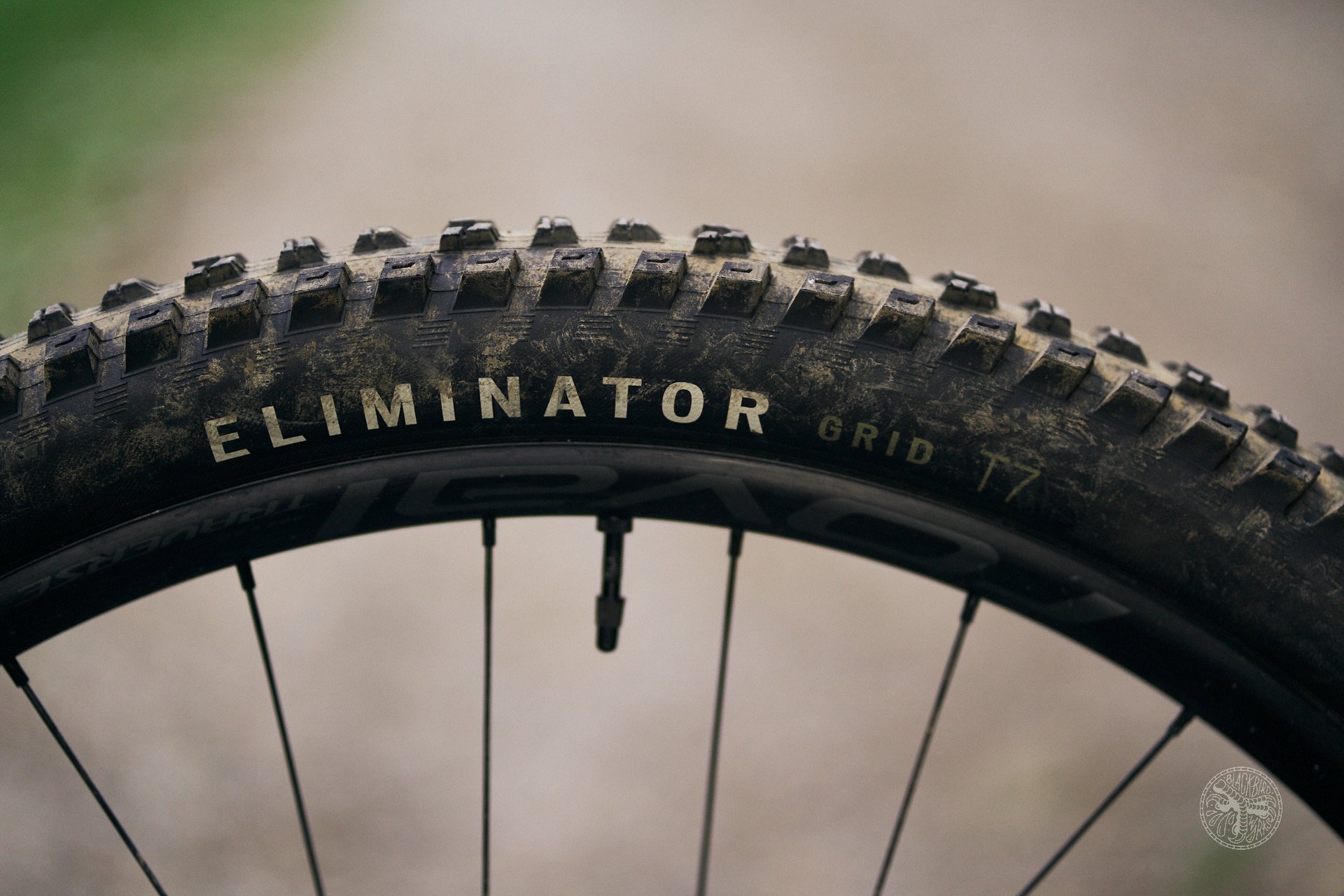
The Eliminator was a quick roller, but lacked bite in the loose stuff.
The impressive performance of the Specialized house-brand components didn’t end with the tires either, as the Roval Traverse wheels required zero maintenance throughout the review period. While I did have Tannus tire inserts installed most of the time, I half expected the 28 hole Roval rims to resemble rotating stop signs after plenty of abuse. And while they certainly are showing the typical cosmetic battle scars from time spent in the mountains, they are basically straight, with the rear rim showing maybe a millimetre or two of wobble - hardly enough to bother getting the spoke wrench out. I can’t remember the last time I rode an alloy rim that required no truing whatsoever over several weeks of rough riding. Rounding out the wheel package are Roval branded hubs, with the rear hub sporting a DT Swiss freehub body. DT’s star ratchet system is typically more reliable than the standard pawl mechanism found on more basic hubs, and it’s a nice feature to see at this price.
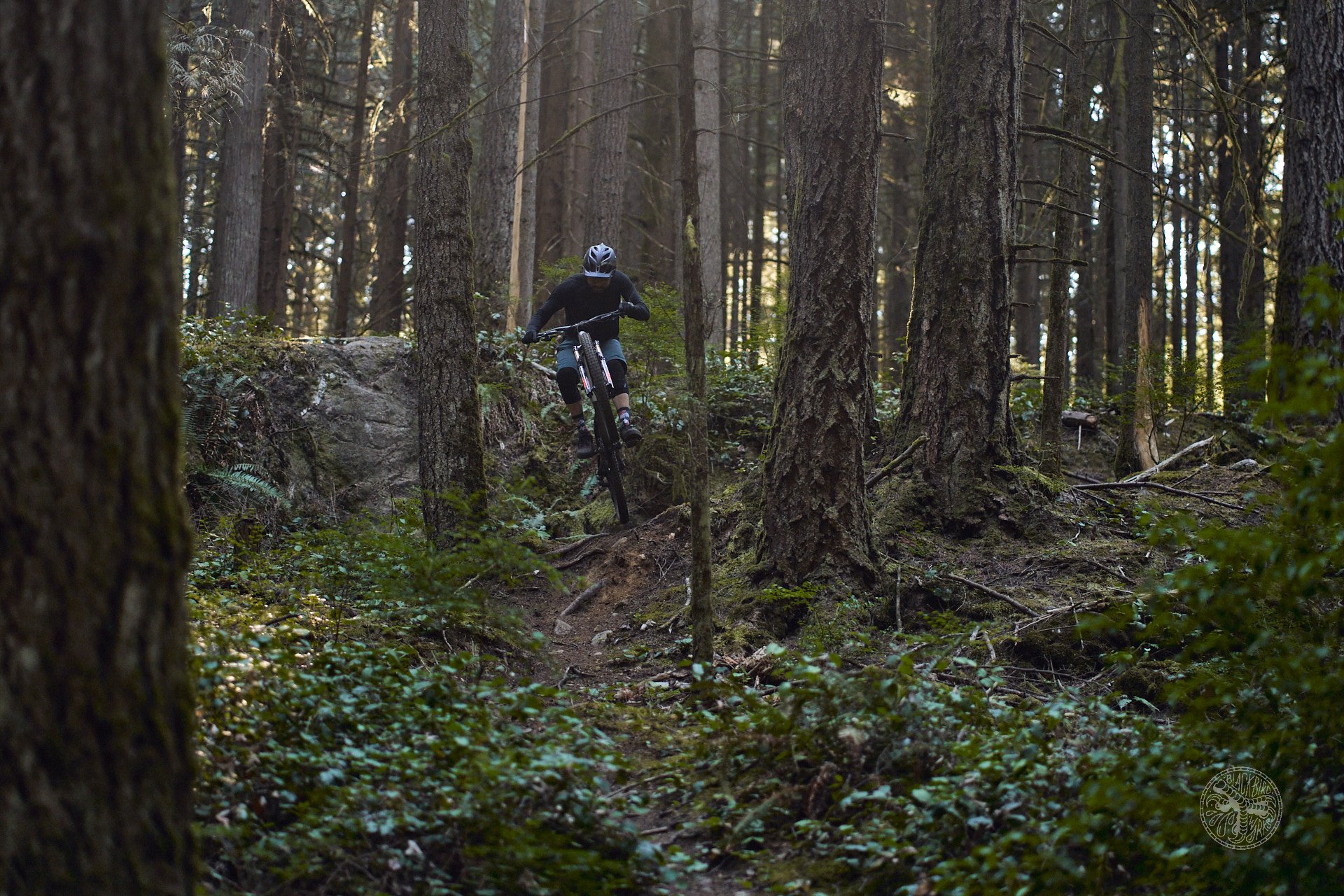
Keeping that low bottom bracket away from the jank.
The Stumpy EVO is more than the sum of its parts - a collection of parts that are well curated to bring out pro-level performance at a less-than-pro-level price. When considering the ingredients that make for a great mountain bike, I personally place very high importance on suspension, wheels, brakes and tires, and the EVO Elite Alloy delivers on all of these fronts. The aluminum frame leaves little to be desired when compared to the lighter and slightly sexier carbon version, and given the choice between the EVO Elite Alloy, and a lower spec’d carbon model, I’d take the Alloy in a heartbeat. Specialized offers a lifetime warranty on carbon and aluminum frames, so there’s no advantage to be gained there, and yeah - the EVO Alloy is a bit heavier, but who cares? The EVO rides much lighter than the scale admits, and realistically speaking, the weight-weenies are more likely interested in a Stumpy that doesn’t say EVO on the tin.
Is the EVO a bike that could replace my Enduro as the ultimate fun machine for The North Shore? Well, the EVO is more than enough bike for most of the terrain in my backyard, and indeed, it has the ability to turn even the sleepiest of trails into one helluva good time. Ultimately, it's that last 10% of gnar where there’s no replacement for displacement, and it’s then that I’m glad I have the Enduro to save me from myself. The Enduro is a bike that excels at picking up the slack when the rider gets tired/sloppy/stupid. The EVO on the other hand, has a narrower margin for error - the geometry encourages very aggressive riding, but you need to bring your own strength and quick reflexes to the dance floor.
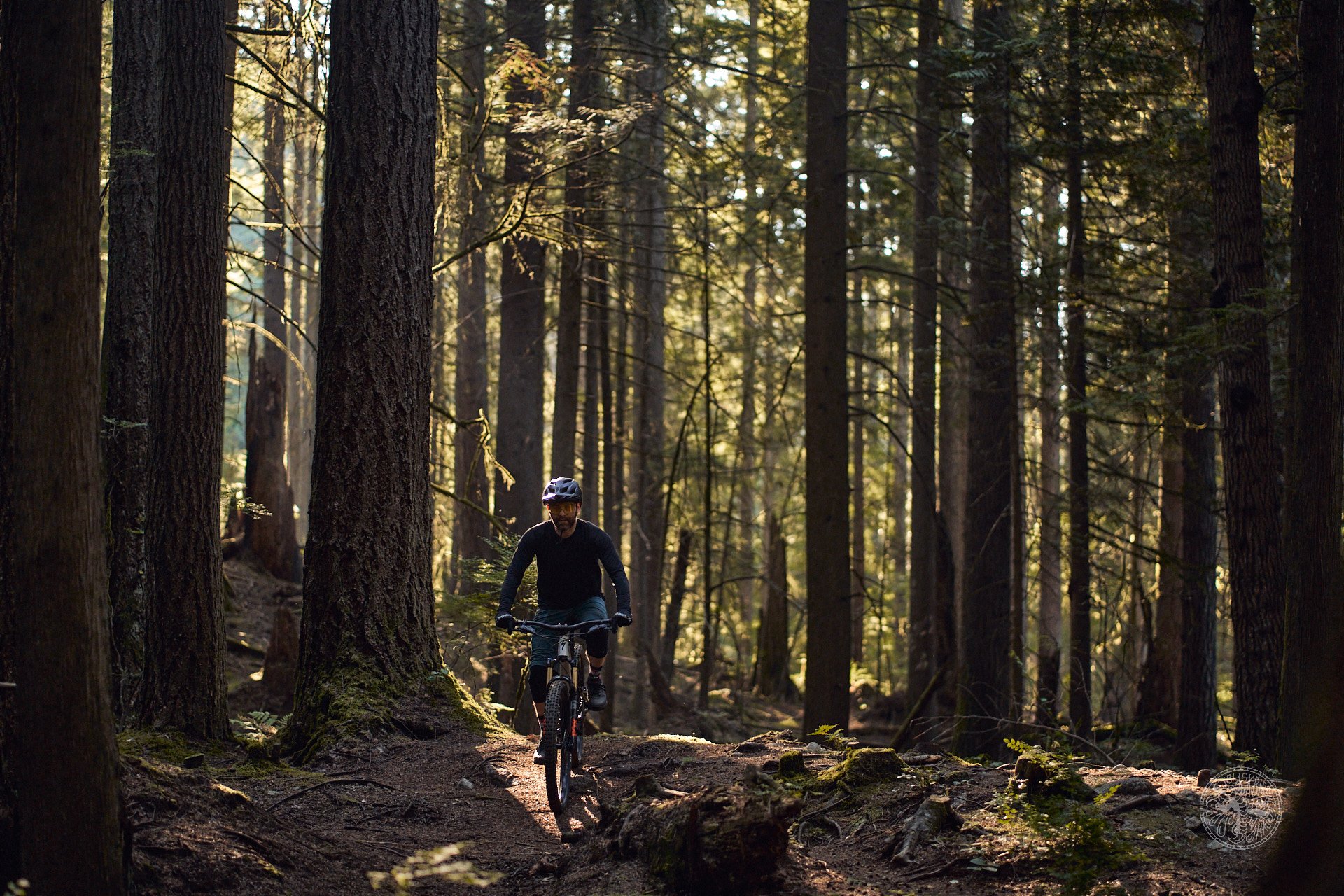
Golden hour with a silver bike.
All things considered, the Stumpy EVO just might be the most well-rounded “aggressive” trail bike I’ve ridden in recent memory. The Elite Alloy model is burly but rides light, and for $7500 you get a spec that doesn’t require any upgrades before you leave the shop. It’s a bike that seems to be the jack of all trades, and possibly the ideal quiver-killer for riders in the PNW. There are certainly better niche bikes to be had, but as far as doing everything really well, it’s hard to beat the Stumpy EVO.
Specialized Stumpjumper EVO Elite Alloy
$7499 CAD / $6100 U.S.
Age : 40
Height : 1803mm
Weight : 86kg
Ape Index : 1.03
Inseam : 787mm
Bar Width : 780mm
Preferred Reach : Pretty comfy at 487mm these days.

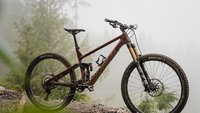
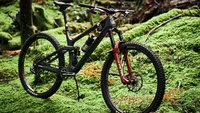








Comments
skywalkdontrun
1 year, 5 months ago
I have a '22 EVO Expert (carbon frame, Performance Elite suspension, otherwise exact same bike) and it's the best trail bike I've ever ridden. I live on the East Coast, and I use it for everything, xc rides, jumps, gnar, even the occasional bikepark day or enduro race. I run it pretty much exclusively in the high/neutral position to keep the bottom bracket out of the way, and not make the uphill steering too sloppy, but I have a buddy who runs his in the low/steep setting and swears by it for everything (granted, he was a pro BMX racer, so that might have something to do with it). The Alloy version of the bike is really nice, but I actually think the carbon Expert level is a better value. The difference between Factory and Performance Elite Fox suspension is color (kashima is great for cookwear, but doesn't make a difference in non-motorized suspension), and for $200 more you're cutting over a pound of weight, getting a stiffer frame, and a better drivetrain (XO vs. GX). For '23 the "RS" version looks even better with a Lyrik select+ and full carbon for $6k USD flat. Aluminum is great, but I'd rather see the same component spec as the Expert level carbon bike, and see the price down around $5k than get the bling of Factory suspension and have to pay more than a carbon frame bike with arguably better value.
Reply
Ryan Walters
1 year, 5 months ago
Wow, that build is great! There are a few subtle differences (rear shock, rear hub, seatpost, etc), but I agree, that is another EVO with good value.
The geo adjustment is really excellent on this bike. Nothing ridiculous, and all very usable for different riding styles.
Reply
Bikes
1 year, 5 months ago
The one time in my life I’ve felt “lucky” paying msrp for my pandemic upgrade to a stevo comp. $4k then, $5.4k now and I have my preferred Shimano
stevo is the correct name and spesh should have made the BB a touch higher so low mode is useable for those that like to pedal tech uphill and like longer CS. Otherwise very fun.
Reply
Ryan Walters
1 year, 5 months ago
Haha! Steve-O. Love it.
Reply
Tjaard Breeuwer
1 year, 5 months ago
I have the S6, so low BB is an even bigger problem than on shorter frames. At the same time, with that long front center, there is no way I would ever run it in high/short chainstay setting.
I finally got fed up with smacking the bashguard (not just the pedals. Those too, and at 6’5” with long legs, 170 mm cranks are pretty short already).
Easy fix:
Install mullet link (but keep 29er rear wheel in there)
Install crown racer spacer:
https://reverse-components.com/en/products/05°-angle-spacer-tapered-forks
For USD 75.00 and an hour of easy home mechanics, I raised the bb about 12 mm from the low setting it was at before.
Rode a rocky, techy flat/climbing trail and it worked great.
The bike always climbed great, but I just couldn’t pedal any where that wasn’t smooth, and the bashguard was getting hammered, making me gun shy of rocks that stick up.
Reply
Ryan Walters
1 year, 5 months ago
As mentioned elsewhere in the comments, I had the thought of increasing the fork travel to kill several birds with one stone - one of those being the very low BB. It's too bad you can't increase the Fox 36 to 170mm travel anymore, as this would have been an easy, affordable way to turn the EVO into a different animal.
Reply
Tjaard Breeuwer
1 year, 5 months ago
Are you sure about that? I considered that for my bike, and I thought you still can buy the air shaft, they just don’t sell it that way as a complete fork.
I might be mistaken though.
The crown race spacer was both a cheap and easy way to test the geometry change, as well as most people not recommending running a 36 at 170mm of travel due to the increased leverage.
Reply
Bikes
1 year, 5 months ago
Oh this is great. Not sure why I didn’t think of using the mullet link like that. Thanks.
I’m in an S4 but very close to buying an S5. Happy with the choice now that I’ve had it for a while but need a bigger riser bar as I’m very inseamy
Reply
Tjaard Breeuwer
10 months, 1 week ago
Well, I did my first enduro race on the new set up a few weeks ago and it was a life saver.
At casual trail riding pace I could deal with pedaling in the stock low setting, but in an enduro race, where you are trying to get pedal strokes in at max power, any where you can, I just am not watching the ground and timing well enough for that.
Now, with the mods to raise it a bit (note that it’s still a fairly normal amount of BB drop, around 32 mm) I can actually hammer the pedals when I want, within reason.
Reply
4Runner1
1 year, 5 months ago
Your comments on the tires is appreciated. I’ve been looking for new rubber but have been hesitant to spend $120 + per tire, to replace my current Maxxis setup. Just checked and the Butchers are on sale for $72. Ordered a T7 grid trail 2.3 for the rear and a T9 grid trail 2.6 for front duty. $151 for 2 tires seems like a deal!
Min-max tires FTW!
Reply
Ryan Walters
1 year, 5 months ago
Yup, while I don't want to jinx it, I think I may have finally found a worthy alternative to Maxxis rubber. Riding in the winter months will be the real test, but I'm about to install 2 Butcher T9s on my Enduro.
I do love Maxxis tires, but I'm now seeing MSRP of $150 CAD. on DD DHR2s!
Reply
Jerry Willows
1 year, 5 months ago
and no wobble
Reply
HughJass
1 year, 5 months ago
I own a 22 stumpy evo expert. The bike is awesome and I am continually impressed by how efficiently it pedals while still being fun on the descents. On the subject of the tires, they started out awesome. Now with about 3 months on them I have flatted the rear twice with large enough tears to require internal patches once home. Several knobs have torn off partially at the casing level, not the typical edge knob undercutting. I superglued those back on and they have held. I don’t think I will be replacing them with another set of Specialized as I typically get more miles with less problems out of Maxxis exo casing. 190 lbs, 5’ 7”, riding in Colorado, 28psi front and rear with no inserts.
Reply
Ryan Walters
1 year, 5 months ago
I'd imagine your rocks are a fair bit sharper and more abrasive than what we get here on the coast, although I certainly would have trouble with EXO casings, particularly in the back. Our trails tend to be slick and slimy most of the year - it's not uncommon for riders to happily go year round on double MaxxGrip around here. I agree that the small centre knobs on the Eliminator were surprisingly fast wearing, Butcher held up much better for me.
Reply
HughJass
1 year, 5 months ago
It is definitely rocky here and the speeds are often higher. I was very impressed with the traction, rolling speed, and tire feel. I was super hopeful that I found something that was cheaper than Maxxis. Unfortunately the Maxxis hold up better even with EXO casings. I also prefer the harder dual compound since it is dry for most rides. I am super curious about the IRC Tanken tires. I remember when the missile was an awesome tire for the time!
Reply
skywalkdontrun
1 year, 5 months ago
I definitely wore out my T7 Eliminator a little faster than a comparable EXO+ whatever, but at half the price, if I'm getting 3/4 of the shelf life I feel like it's a win. Also, Specialized has released a new casing for 2023, so some of the durability issues may be fixe in the future.
Reply
WalrusRider
1 year, 5 months ago
I've been running Butcher T9 front and rear for a while now and I love it. Traction in all conditions is excellent. The T9 on the rear wears faster but the grip is intoxicating. When my rear tire wears out I'll give a T7 Butcher a try and see how it rides.
Reply
Timer
1 year, 5 months ago
Specialized have really upped their tire game over last few years.
One thing I noticed is that they don't really have a mid weight casing equivalent to maxxis DD or Exo+. The Grid Trail casing is lighter and therefore a bit more fragile than EXO+, while the Grid Gravity versions seem more like DH tires.
Reply
Ryan Walters
1 year, 5 months ago
Even if they are a touch lighter than EXO+, going on my positive experience with the Stumpy, I'd still say the durability of the Grid Trail was on par.
I just weighed some tires last night- a Butcher Grid Gravity is 50g heavier than the comparable Assegai DD, so the Grid Gravity is not far off.
Reply
Andy Eunson
1 year, 5 months ago
I’d like to see more aluminum bikes like this but with an even higher spec. Too many times you see a great looking aluminum framed bike, but the spec has several parts that are suspect. My Chameleon I bought 5 seasons ago is a prime example. Stock it needed a dropper added, better hubs, saddle was a throw away as well as grips, tires not what I would use, cheaper drivetrain that I could live with and a lower end fork with too little travel. And shitty brakes. All the changes I wanted meant it made more sense to buy a frame and pick parts. Ended up pretty expensive but I avoided changing most of the parts within a few months so it was probably better this way. I love the bike too. Not all but many manufacturers seem to think those that wish to buy a metal bike want cheap parts too. Frame only option is also excellent.
Reply
Ryan Walters
1 year, 5 months ago
In addition to this Stumpy, brands like Transition and Commencal are offering great alloy builds.
Reply
Functionalmayhem
1 year, 5 months ago
I’m a proud owner of this frame. I bought it in fall 2021 as soon as it was released. One available in my size coming to BC. I bought it right away as seeing the pandemic shortages I took the chance.
I built it up with a Fox 38, Saint brakes XO1 drivetrain. I Mulleted it too and won’t go back. It’s a very fun bike and still points and shoots with bigger fork. You also forget it’s a pig going up. Worth it when going down :)
Reply
Ryan Walters
1 year, 5 months ago
On numerous occasions, I mentioned wanting to try this bike with my 170mm Zeb up front. With the adjustments, you could basically conserve geometry, while running the bike a bit higher. And so much of our riding is “fork heavy”, so I think it would be a great fit for our local stuff.
Reply
Bogey
1 year, 5 months ago
I have a new 170mm Zeb waiting to go on my Stevo Expert. The Lyrik is great for most riding except for that fork heavy Shore riding. I’m also a big dude on a size S6 so it just makes sense. 220mm rotor up front too.
Reply
Ryan Walters
1 year, 5 months ago
I know you’ll love it. The Zeb is a fantastic fork, and 220mm rotors will help control the speed that fork will open up.
Reply
Tjaard Breeuwer
10 months, 1 week ago
The Zeb is a bit taller axle to crown than a 36\Lyrik right? If so, that might be great for us tall folks.
The S6 is reasonable long, but quite low in the stack.
So you end up raising the front about 15mm static (although actual riding down it will be a bit less due to more sag).
Then, if you use the steeper headset cups to keep the head angle more similar (and keep the front center from getting to long on the S6), it will raise the the front end even a bit more.
So you get a bigger, burlier fork to match your size, keep the same head angle, but increase the stack. Great solution!
Reply
Tjaard Breeuwer
1 year, 5 months ago
My 14 year old daughter and I built up from the alloy frame kit (so comes with basic Performance X2 shock) for her this past winter. Mostly similar parts to this build.
We put a 170mm airshaft in her Lyrik Ultimate (that she had at 150 on a shorter travel bike last year), to raise the bottom bracket a bit.
At 6’/183cm, she got the S4 too. She runs it with the mullet link (which lowers the bb a touch, hence the slight over forking), and in the low setting. Not to get it lower, but to get longer chainstays. According to the chart it’s only 7mm different in height.
Running 165mm cranks and a full bashguard/chainguide (https://cascadecomponents.bike/products/iscg-05-full-chain-guide) she has not complained about a low bottom bracket.
We put the takeoff Code RS on, updated with the new 2.0mm thick HS rotor for better heat resistance in rear, but in 180 mm for the smaller wheel. 200 mm in front.
Also using the XO1 shifter and derailleur from my bike on there, with a X01 10-50t cassette (smaller steps in the lower end of the gearing), a 180mm One up dropper, Syntace 20mm riser bar and 50mm stem.
Galfer Pro pads front and rear.
She has some Bontrager carbon wheels with the 2.6 T7 Eliminator (27.5) rear and Assegai Maxxterra 2.6 up front. Rimpact pro in back sometimes.
My thought was the bigger rear tire would help claw back some bb height and rollover lost to the smaller wheel.
For park she has a alloy wheel set with cushcore, Grid Gravity T9 2.6 Butcher rear, and 2.5 Maxx grip Exo+ Assegai up front.
It was fun build over the winter, including her doing her own Ride wrap. It looks great with the bronze/gold accents, including swapping the Lytick decals to match, it is one of a kind, and it rips for her enduro team practice (on our shorter terrain here in the Midwest) while not being a joy killer on the many easier trails around here.
Reply
Ryan Walters
1 year, 5 months ago
Wow! All the customizations!
It's pretty cool all the different ways you can dress up this bicycle. A truly versatile machine.
Reply
Tjaard Breeuwer
1 year, 5 months ago
Reply
Velocipedestrian
1 year, 5 months ago
A mate bought an original Stumpy EVO and lent me a short hoon.
Pretty sure it was full low+slack, the way that thing went around a corner was intoxicating. Then I tried to pedal and immediately hit all the things.
Geometry is compromise, just pick what suits you best.
Reply
Steven Hambleton
1 year, 5 months ago
It's a shame they can't deliver the same value to their lower end models.
Reply
4Runner1
1 year, 5 months ago
The aggressive trail bike (previously known as All Mountain) is the sweet spot for Island riding. I’m also a sucker for builds like this that offer high end in the right places.
Thanks for an excellent review. Killer bike at a palatable price is refreshing!
Reply
Ryan Walters
1 year, 5 months ago
Cheers! This bike is way more fun than it ought to be!
Reply
Cooper Quinn
1 year, 5 months ago
Careful thinking that way. Two more steps in the same direction and suddenly you'll be on something with a 66deg HTA and a Sid.
Reply
trumpstinyhands
1 year, 5 months ago
I'm struggling to see the value compared to something like a Trek Slash 8 that is also a bike that can be purchased in a shop. The only real world difference in spec that I can see are Code RS levers compared to Code R and maybe slightly better tires. Gold colored suspension is a hard 'whatever'. The Trek is over $2000 cheaper.
Reply
Ryan Walters
1 year, 5 months ago
Valid point - that Trek is seriously impressive. I don't think you can compare a Lyrik Select to a 36 Factory though. And I'd personally far sooner take the Specialized wheels and tires over the Bontrager stuff.
But you're right, $2000 less is not insignificant.
Reply
Raymond Epstein
1 year, 5 months ago
Killer review and exactly what I was hoping to read. I am this close (tiny fingers emoji) to buying a frame. I have a full kit ready to go, but the bike I have wanted seems to be back ordered into eternity. Additionally my friend went from an Enduro to this and says for everyday fun this EVO is superior. Meanwhile I can get this nearly instantly at half the cost of the frame I was going to order. My fork is a Zeb 170 which figured with all the geo adjustments and that I'll run the bike as a mullet shouldn't be problem. The couple things I'm going to do have it be my bike is get it custom powder coated and put a coil shock on it. I think running said shock with a MRP progressive spring should add plenty of progression that could be lost.
Reply
Speeder1
1 year, 5 months ago
Great review. The comparison between this and the Enduro is fascinating. I have not ridden the Enduro. I've put some good miles in a demo S Works Stevo and I agree with what most others seem to think, it is a fantastic all arounder. I found it very easy to get comfortable on at speed and really a fun bike. I was also very impressed with how well it climbs.
The 6k usd RS build is a pretty good deal compared to some other brands. A few weeks ago the Expert build was on sale for a short time for under 5k. That was a really good deal. The sale didn't last long!
Reply
Ryan Walters
1 year, 5 months ago
They’re both fantastic bikes. The EVO is certainly a better all-rounder, whereas the Enduro’s niche is turbo gnar all the time.
Reply
Tjaard Breeuwer
1 year, 5 months ago
My friend and his son share the same size bike, and have an Stumpy Evo and Enduro. Most of the time, even for the Enduro races, his son (very fast kid) prefers the Stumpy Evo. That is for around here in the Midwest, where courses might be rough, and they might be steep, but they are seldom rough, steep, fast and wide open all at once.
Out west he chooses the Enduro.
Reply
Bogey
1 year, 5 months ago
Thank you @specialized for making a proper XXL(S6) with proper reach and stack. In early pandemic times I found a S6 Stevo Expert at Steed and it is the best bike I’ve ever owned. It climbs really well, is fun on all trails, looks great (raw carbon), and has the SWAT box for my stash.
I swapped to a 2022 Lyrik and a 2023 Super Deluxe Ultimate then added some We Are One wheels and I can ride this bike almost anywhere.
Reply
Justin White
1 year, 5 months ago
"The Eliminator was a bit too eager to lose traction on steep chutes, and the resultant skidding further compounded the issue by quickly eliminating the Eliminator’s already too tiny treads."
This is why I tried Eliminator up front and Butcher in back! I shredded an Elim out back real quick, but in front it's lasting well, and when it's not getting dragged around it can keep up with a Butcher in everything up to "pretty mucky". I also like the way it drifts a but easier but way more predictably that a Butch. Has me hunting for corners where I can afford to let the front push and just letting it get loose right up until I want it to come back. Confidence builder!
Reply
arca_tern
1 year, 5 months ago
Ryan's height is oddly specific:
Height : 1803mm
Why not 180.3cm? Or was it a imperial -> metric conversion?
Back to the bike....
Reply
Ryan Walters
1 year, 5 months ago
Haha! Just a joke. Not even an inside joke. I’ve had more than one person ask me about that.
Reply
Cooper Quinn
1 year, 5 months ago
Fortunately, accuracy and precision are different.
Reply
Tjaard Breeuwer
1 year, 5 months ago
https://nsmb.com/articles/were-being-slowly-boiled-super-boost/
On my Carbon Stevo I run a 30t non-boost chainring, with no clearance issues. I think it would fit on the alloy frame too, but have not tried.
Reply
Ryan Walters
1 year, 5 months ago
Ahh, interesting. I actually found the stock chainline and back-pedaling ability in the larger cogs to be quite good on the EVO. But I do like the idea of running a chainring biased more inboard for better chainline in the climbing cogs.
Reply
Tjaard Breeuwer
1 year, 5 months ago
Yeah, I didn’t have real problems with the boost chainring either, and neither does my daughter with the alloy.
My S6 also has 551 mm chainstays, so that helps a bit to make chainline less critical.
Still, with my wimpy legs, I spend a lot of time in the easier end of the block, so just for wear and drivetrain efficiency, I decided to swap. Marginal gains baby!
So, I am not saying others should do so as well, just that if you wanted to, you can.
Reply
Nate Hecht
1 year, 5 months ago
I just picked one of these up a few months ago, and it's a solid bike. The dt swiss 370 hubs are nice, but come with the 18t star ratchet (20.0 deg). You'll want to upgrade to the 54t (6.67 deg) asap if you do any technical climbing.
Reply
Ryan Walters
1 year, 5 months ago
I actually prefer the lower engagement ratchet (I run it on my Enduro). While it’s a controversial topic, I’m convinced a lower engagement freehub body results in better rear wheel traction when braking hard in super rough terrain. When the rear wheel is rotating slowly (or locked up), a high engagement hub is more likely to cause pedal kickback, which affects suspension and reduces traction. I’ve heard anecdotally that the lower engagement ratchet is sturdier too.
Technical climbing is a bit of a chore, but worth it for me.
Reply
Jerry Willows
1 year, 5 months ago
less drag when coasting as well.... the 54t isn't very durable from what I've read.
Reply
Nate Hecht
1 year, 5 months ago
Absolutely. That's another great thing about the bike, easy to build it how you prefer. High/0 deg/54t and you'll have a decent climbing bike that can still get rowdy. Low/1 deg/18t and you can have a dh rocket.
I haven't found kinematics for the bike, but the 2019 version had pretty low pedal kickback in the first place.
Reply
hankthespacecowboy
1 year, 5 months ago
I have the '21 St-Evo, which is a bit shorter travel (140?) than the '22, and doesn't have the head angle adjustment features. Of course, I knew I had to try it in the low position, so I set it up with 145mm Profile BMX cranks, which gives the best of both worlds in corner-schralping ability, and nearly eliminating rock strikes at the same time. Loved the bike on the descents, but the summer I had it built up had me seriously questioning my fitness at I had magically become the slowest rider on every group ride, and was beginning to loathe the idea of riding bikes. After taking the bike to three different establishments for hopes of diagnosis, I finally detected a roached wheel bearing over the winter when I had time to carefully check the bike over without being in a rush to make it to the next ride. In the meantime, I built up a Forbidden Dreadnought, which astonished me with its climbing composure, but reading this review makes me want to get Stevo back together, and compare the pop v. plow factor of the two bikes.
Reply
Ryan Walters
1 year, 5 months ago
Lol, 145mm cranks AND roached wheel bearings? Yeah, that would have anyone questioning their fitness!!
Reply
Suns_PSD
1 year, 5 months ago
Timely review. I love my SjEvo. But just damn that BB is SOOOOO low. Makes thre 'low/ long' position completely unrideable.
I experimented with a Williams Brothers Racing Mullet set up and the Mullet had some great traits actually, but the loss in climbing performance was too much for my needs and low ftp.
So I now have the Williams Mullet link, but with the 29er rear wheel. Then I swapped to the low BB/ long CS setting to offset some of the increased height.
Compared to the stock link with a 29er in the short CS position: The net result was it raised my BB 9mm, steepened my HTA from a measured 63.2' to now 63.8' (slackest setting), steepened my STA a hair, shortened my Reach about 6mm which works out well for me, and allows me to to run the longer CS length. Also the Williams link has a bit higher AS.
I'd like to report how it rides like this, but I just made these changes in the garage and have yet to test.
Reply
Justin White
1 year, 5 months ago
Time for those 155mm cranks!
Reply
BarryW
1 year, 5 months ago
Overall a decent review, but for the love of jank can we please stop with this kind of incorrect information!
"The EVO's suspension, on the other hand, feels more linear, and you really need to increase the air pressure (or add volume spacers) to keep the Float X from bottoming out on big hits."
Sure, more linear, all good, but the 'increase air pressure (or add volume spacers)"??? These are not interchangeable! One is used to set sag. Which should be a pretty static pressure needed even once spacers are adjusted. As you noted, you obviously put more pressure in, decreased small bump sensitivity instead of what you should have done, which is decrease volume with spacers. This type of mild misinformation is really damaging for riders to understand how the concept of correct pressure for sag is different than tuning progression via spacers.
And I don't mean to imply it's only you doing it. I see this noted on even long term reviews where apparently opening a shock is just too hard so we incorrectly judge a poorly adjusted bike.
Reply
Jerry Willows
1 year, 5 months ago
I get a kick out of people telling others how they should set their suspension . Stuffing a shock full of spacers is not necessarily the best idea. Depending on factors, it can get harsh at the bottom end and not have the mid stroke support.
Reply
BarryW
1 year, 5 months ago
I'm not sure if you think this is directed at me or beside me?
My point is that setup pressure and volume spacers adjust completely different things, so writers should strive to use clear language to discuss that, with notice taken for the differences these two variables adjust.
I'm not telling anyone how to adjust their suspension.
Reply
skywalkdontrun
1 year, 5 months ago
If you weight more than 190lbs chances are good you shouldn't have any spacers at all. The only exceptions being racers who are looking to achieve a specific shock tune for a specific track.
Reply
Cooper Quinn
1 year, 5 months ago
Yes, adjusting air pressure and volume have different effects. But often - especially with initial setup - if I change one, I find I'll need to adjust the other. That's not always the case, and so no they're not interchangeable, but they're interconnected.
eg if I want more support/less sag off the top, I'd add air. I might also wind up adding volume.
if I want more small bump, I could remove air, but might end up removing volume to keep from bouncing off the bottom.
And, he's not wrong. You could add air pressure or volume spacers to keep the shock from bottoming out - yes, there's going to be other effects, but the sentence as written isn't incorrect.
Reply
BarryW
1 year, 5 months ago
First scenario you pose: you want more support, and WANT more sag (please explain how/why you want more sag (asa percentage) vs. simply wanting more sensitive feel).
In your answer you say more pressure (to reduce sag) and increase progression by adding volume spacers. Why did you adjust two variables? You should first increase setup pressure, see how it feels. Realize that it will increase 'support' at all stages of travel and incidentally decrease bottom out as you have set your bike up as though for a heavier rider.
If you have issues with harsh bottom out only then should you increase progression by adding spacers. Adding spacers initially won't really do much for mid-travel support, it really tunes the lower 1/4 of travel more than the 50% level. That is where setup pressure (sag) comes in.
As for the second scenario, I'm assuming you mis-typed that, but here goes in case you didn't.
"if I want more small bump, I could remove air, but might end up removing volume to keep from bouncing off the bottom."
To in small bump, you should decrease setup pressure. Decreasing sag and decreasing the force needed to 'break away' suspension movement. BUT! As this will increase the tendency of harsh bottom outs, you would tend to find that increasingly progression by ADDING spacers is the correct course of action. Because adding spacers increases progression, therefore increasing spring strength towards the end of the stroke. Paired with lower pressure this is the way to more small bump compliance, not removing spacers. That will cause a soft soft suspension that will fall through through the travel.
Maybe we need more remedial suspension setup from true experts.
Reply
Jerry Willows
1 year, 5 months ago
here's some remedial suspension setup for you:
https://www.pinkbike.com/news/tech-tuesday-volume-spacers-and-spring-curves.html
for me with a stock air can, you need lots of spacers... with a bigger air can like a MegNeg from RS, you need less than half.
Reply
Cooper Quinn
1 year, 5 months ago
No, re-read what I wrote.
I said adding VOLUME, not adding volume spacers (and, reducing volume, not reducing the amount of volume spacers.) You're advocating for what I said, you're just phrasing it in terms of adding or removing volume spacers, instead of adding or reducing volume.
Adding volume spacers reduces volume.
Removing volume spacers adds volume.
Also, yes, you should independently adjust these variables and won't necessarily do both. That's why I said "often", "not always", and "might".
Reply
Ryan Walters
1 year, 5 months ago
Thanks for the comments BarryW. Just want to clarify a few things. No one is more aware of the difference between the effects of air pressure vs. volume spacers. My comment about using more air pressure or volume spacers was not wrong - they will both aid in stopping the shock from bottoming too much. Maybe I could have better differentiated how those two strategies go about accomplishing that.
Also, if you read my suspension settings, you’ll see I’m nearly maxed out on volume spacers in the Float X. The Stumpy comes stock with .4 cubic inch spacer installed. I actually reached out to Specialized for them to send me the bigger spacers required for the Float X. They were happy to send them out. I settled on .8 cubic inch spacer (that size Float X maxes out at 1 cubic inch). I found I got the best ride out of the Stumpy with that spacer and pressure combo. So you see, I wasn’t afraid of opening up the shock - multiple times.
My comment about sensitivity was more a comparison to the Enduro, a bike that clearly can be set with better early stroke sensitivity, for multiple reasons.
Setting up suspension is a complex process, and I’d like to think I’m pretty damn good at it. I do wonder how many other review sites bothered with non-stock spacers in the shock. I feel like this is one of the things we do differently at NSMB.com. We live and breathe these bikes, often for a few months. I know I speak for all the reviewers on here when I say we take bike setup pretty seriously.
Sorry for the confusion.
Cheers,
Ryan
Reply
Please log in to leave a comment.